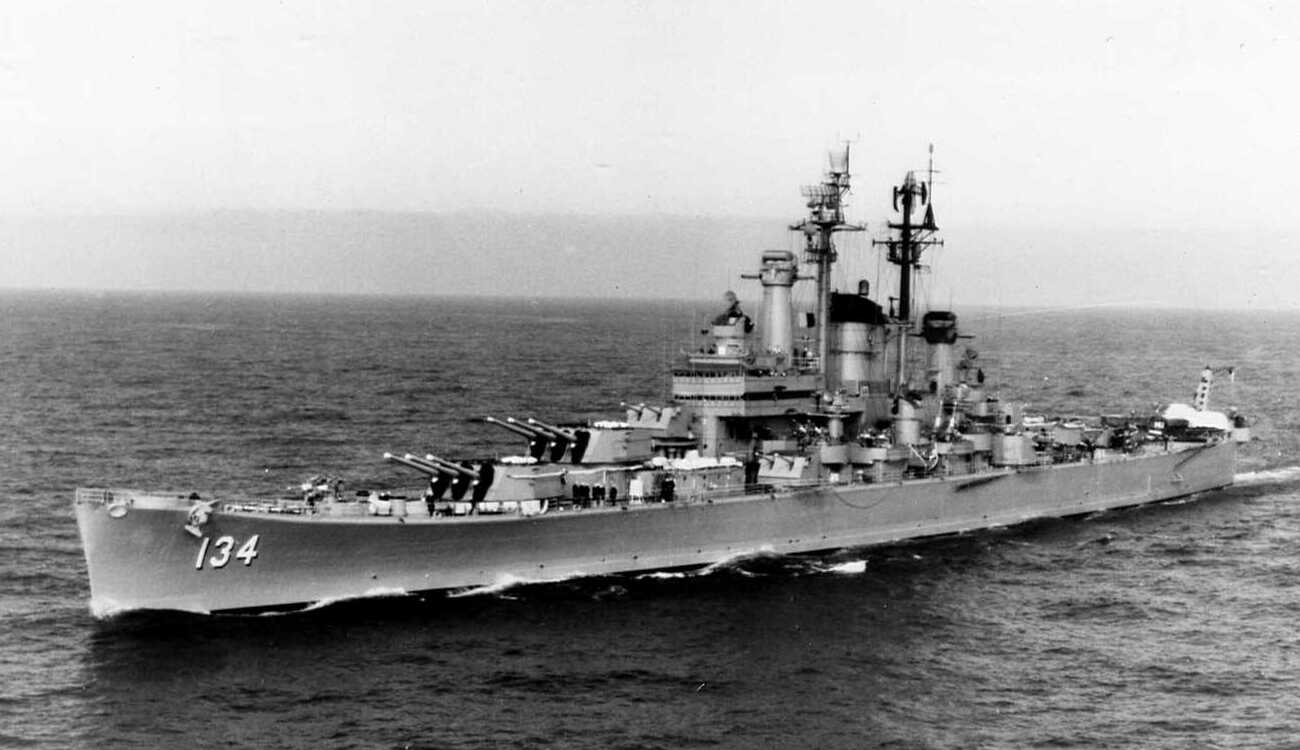

Aircraft carriers were an integral part of the American WWII effort. They enabled the U.S. to transport necessary aircraft to the “battlefield” of the Pacific Ocean. They withstood the destruction of armed adversaries, supporting both planes and troops. Without these large ships, the West would not have been as successful in their fight against the Axis powers. But what became of these aircraft carriers in the aftermath of an American victory?
Using multiple sources, including The Naval Vessel Registry’s database of WWII ships, 24/7 Wall St. discovered what became of every American aircraft carrier used during the second great war. Each listing here includes the class of craft, as well as the date of commission. Supplemental information was derived from other historical sources.
Yorktown-class carriers were the first U.S. aircraft carriers utilized during WWII. These particular carriers were known for their defensive measures and capacity. They included the USS Yorktown CV-5, the USS Hornet CV-8, and the USS Enterprise CV-6. During the 1942 Battle of Midway, these ships displayed excellent fighting abilities. One is even among WWII’s most highly decorated U.S. Navy ships.
Lexington-class carriers, originally built as battle cruisers, were another fleet that excelled early in the war, after being converted into carriers. These included the USS Saratoga CV-3 and the USS Lexington CV-2. These ships were slower and smaller than their successors. However, despite their limits, they successfully repelled the Japanese during the Battle of the Coral Sea.
In the later years of the war, the ever-resilient Essex-class and Independence-class carriers pulled significant weight, demonstrating a large capacity and ability to survive the open seas. Both the USS Intrepid CV-11 and the USS Essex CV-9 played a role in two important battles: the Battle of the Philippine Sea and the Battle of Leyte Gulf.
Thanks to their innovative build, the carriers on this list led the American naval war effort. They charged through open seas, adapting to unforeseen challenges. Some of these behemoths even survived the destructive battles they took part in.
Why We Are Covering This Topic
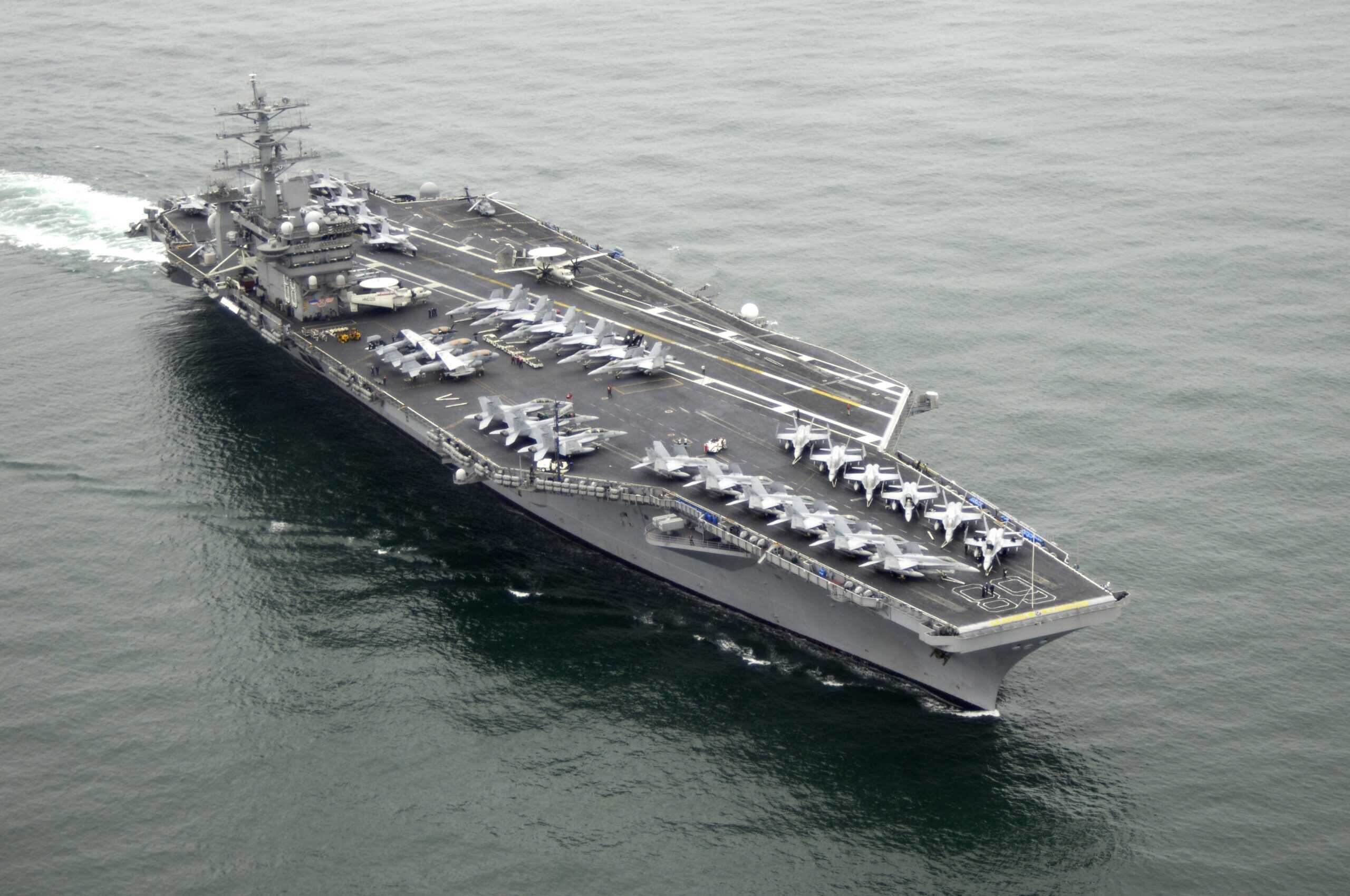
As war rages across multiple regions of the globe, the potential for another world war is in the forefront of the political mind. With the horrors of past world wars barely out of existing memory, it bodes well to remember the most recent of these global wars, WWII, eventually led to an American victory. Aircraft carriers played an essential role in our nation’s successful defeat of enemy forces. United States’ aircraft carriers helped wage the war on Japan amid the Pacific Ocean. Today, the USS Dwight D. Eisenhower, a currently active American aircraft carrier, proudly protects U.S. interests against Houthi rebels on the Red Sea.
Here is the fate of every American aircraft carrier of World War II:
USS Bennington (CV-20)

- Retirement: Discarded on January 12, 1994, by Navy sale
- Class: Essex
- Date built: August 6, 1944
USS Bennington (CV-20) continued
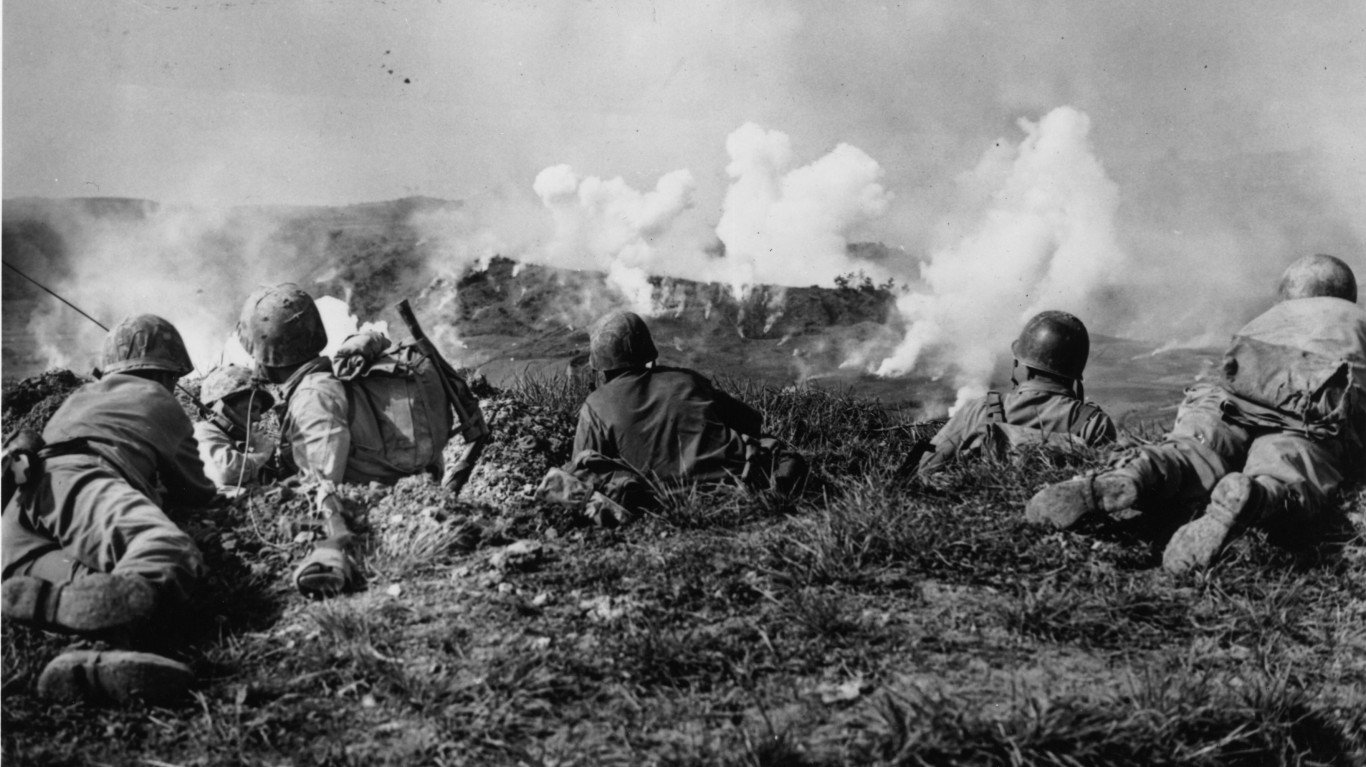
The USS Bennington was in service during the invasion of Okinawa. It later helped troops in Japan, before being recommissioned in 1952 for use in the Vietnam War. The Bennington was decommissioned in 1970 and placed in the Pacific Reserve Fleet. It was removed from the Naval Vessel Register in 1989.
USS Bon Homme Richard (CV-31)
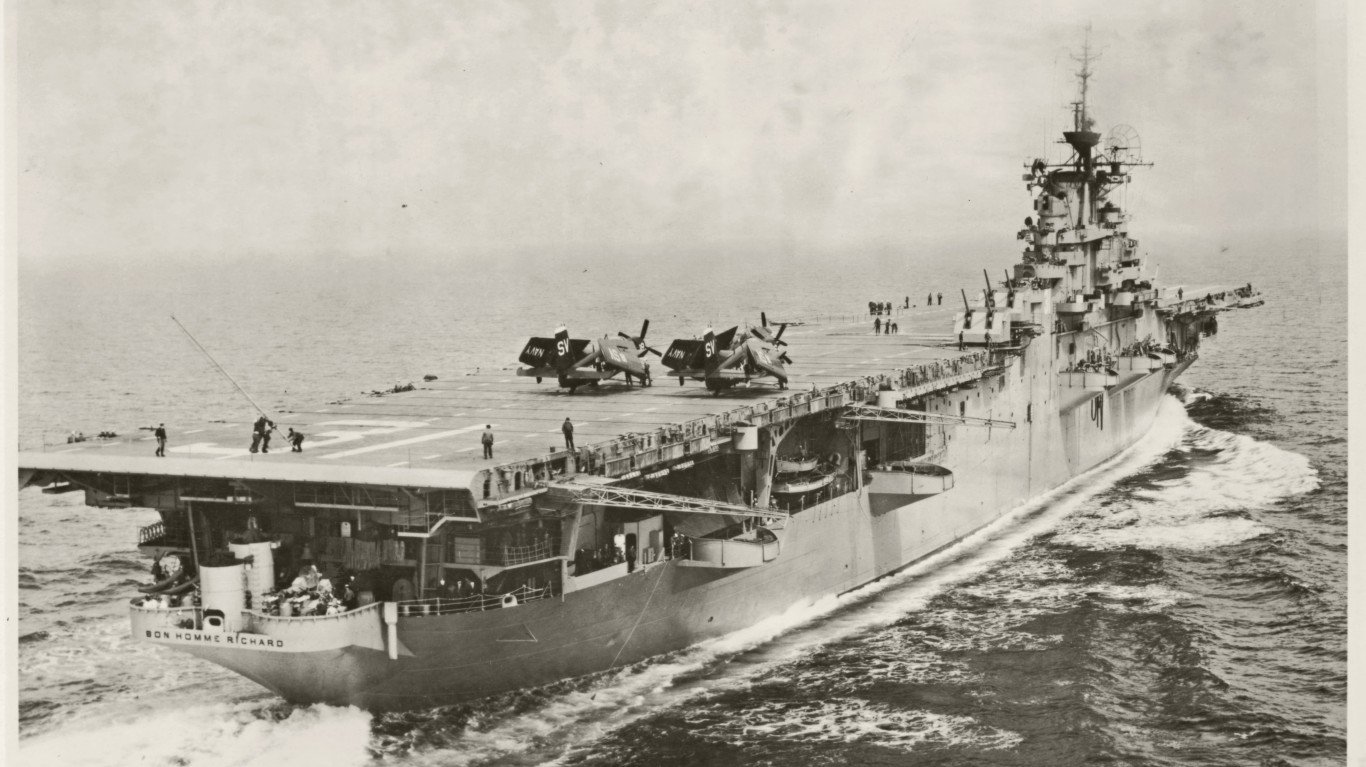
- Retirement: Discarded on February 4, 1992, by dismantling and recycling
- Class: Essex
- Date built: November 26, 1944
USS Bon Homme Richard (CV-31) continued
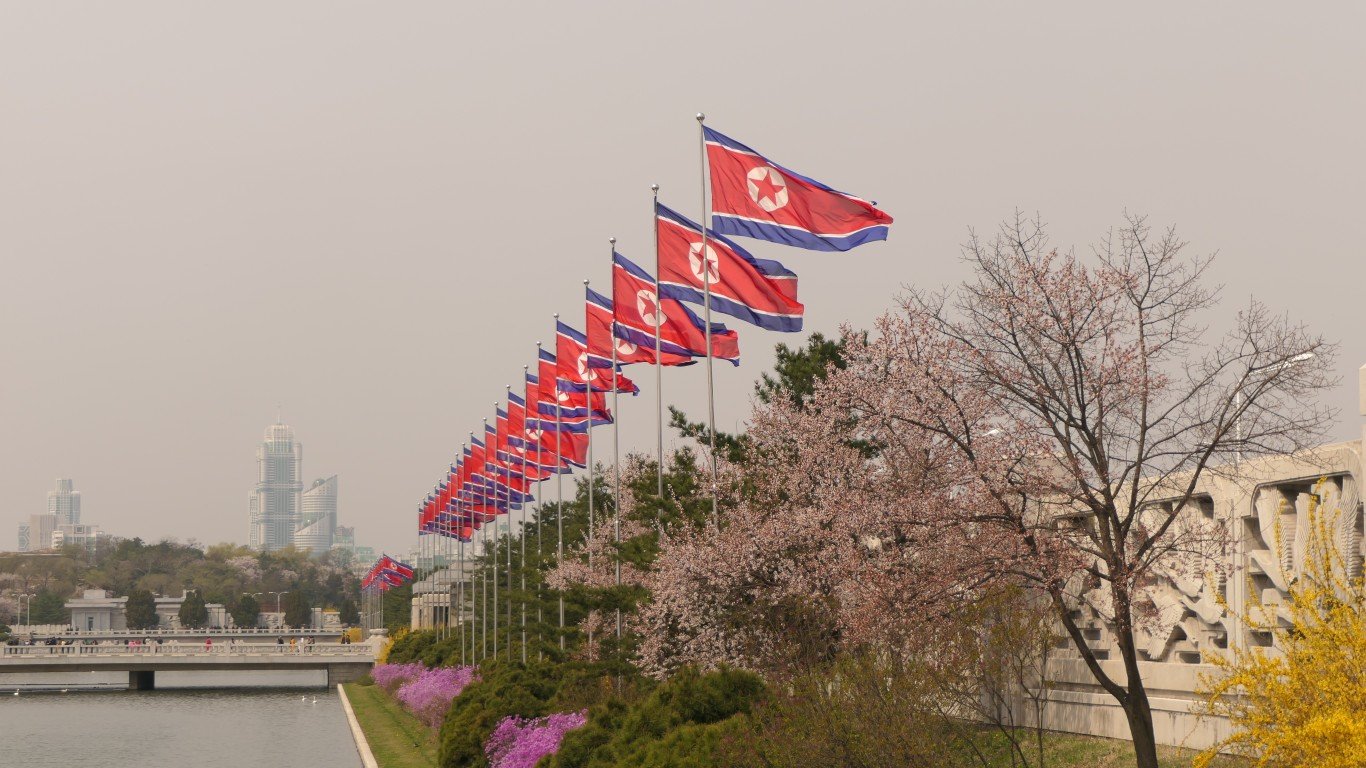
In both WWII and the Korean War, the Bon Homme Richard was a major player. It fought Japan and launched attacks on Okinawa as a member of the Pacific Fleet, before famously transporting troops home during Operation Magic Carpet. In 1951, it was recommissioned for service against North Korean adversaries. Later, the Bon Homme Richard was upgraded, before being decommissioned in 1971. In 1992, it was dismantled and scrapped.
USS Bunker Hill (CV-17)
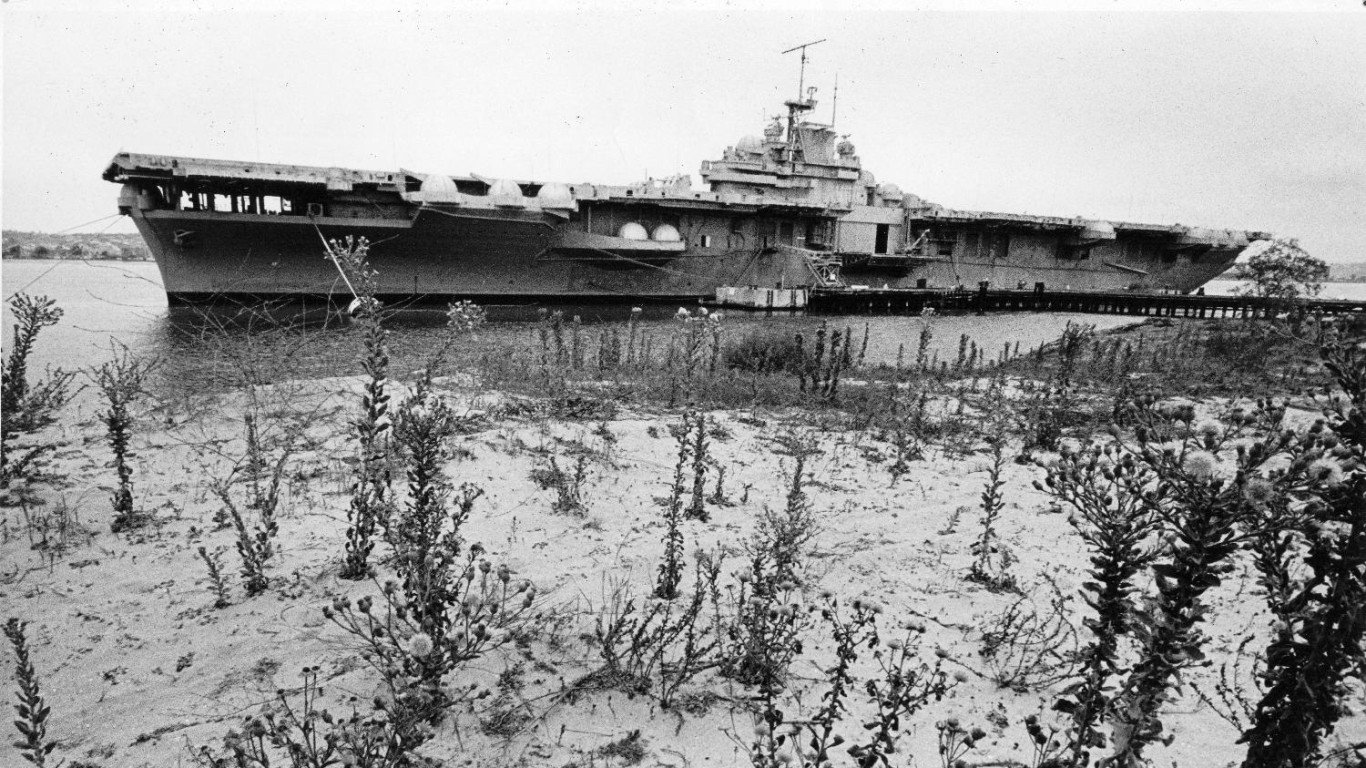
- Retirement: Discarded on July 2, 1973, by Navy sale
- Class: Essex
- Date built: May 25, 1943
USS Bunker Hill (CV-17) continued
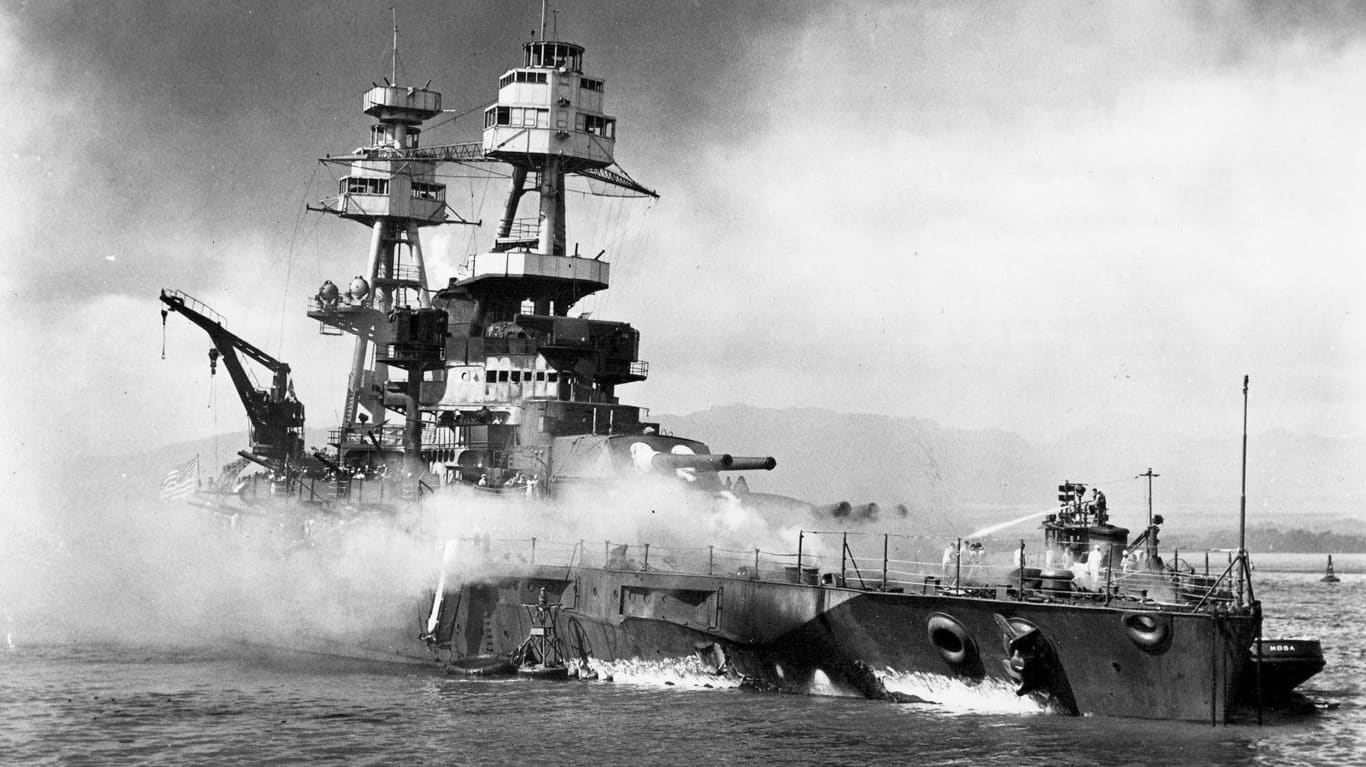
As part of the Essex-class carriers, the USS Bunker Hill fought in two important battles: Iwo Jima and Okinawa. During the latter, kamikaze attacks resulted in a disastrous fire, which caused an abundance of casualties. The carrier was shipped back to the U.S. and decommissioned in 1947. After failed attempts to transition the Bunker Hill into a museum ship, it was taken apart and sold for parts in 1973.
USS Enterprise (CV-6)

- Retirement: Discarded in July 1958, by dismantling and scrapping
- Class: Yorktown
- Date built: May 12, 1938
USS Enterprise (CV-6) continued
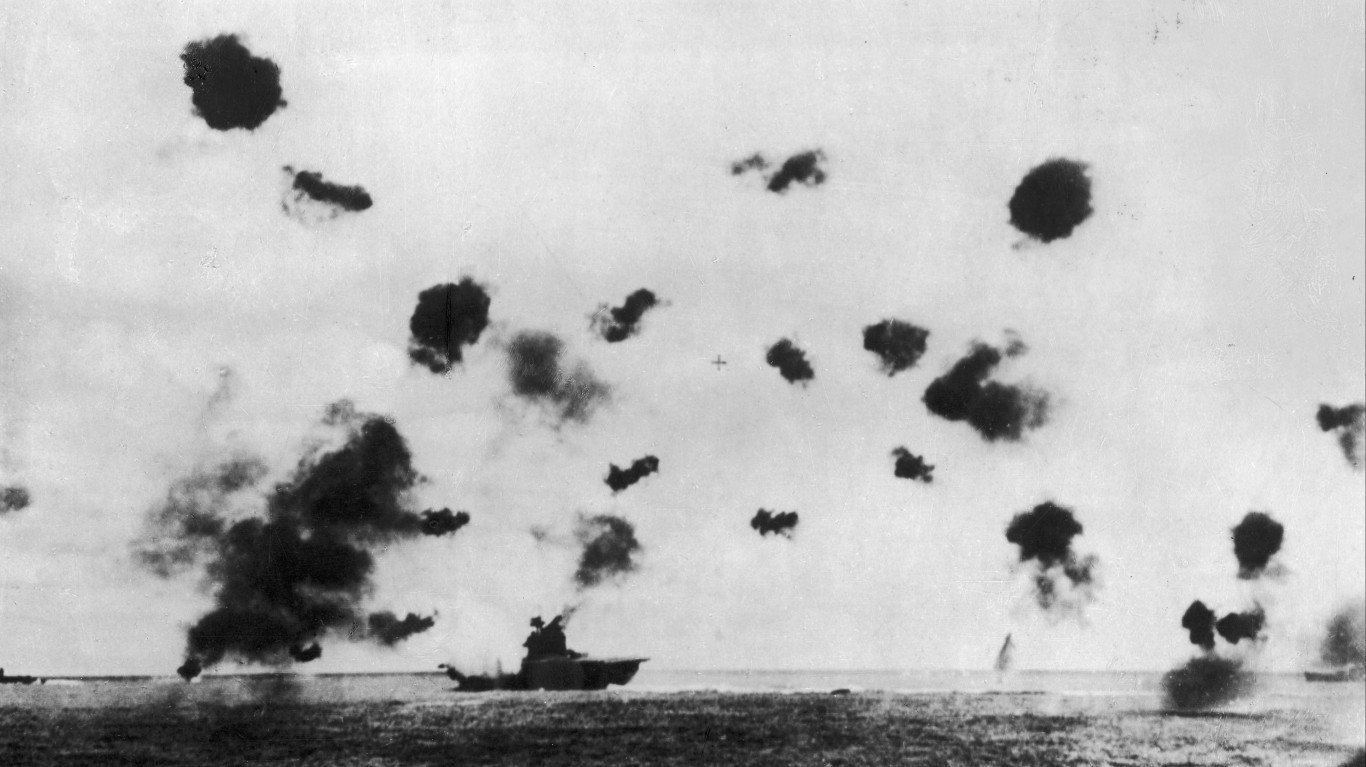
As the second World War’s most decorated naval vessel, the USS Enterprise proved itself on the mighty Pacific. It sank several enemy ships at the famous Battle of Midway. After playing a role in the Guadalcanal campaign, the Enterprise was active in the Eastern Solomons and Santa Cruz Islands, as well as the Battle of Leyte Gulf. It also participated heavily in the Marianas and Philippine Sea. It continued to support U.S. troops, even after kamikaze attacks, and was eventually decommissioned and sold for scraps.
USS Essex (CV-9)
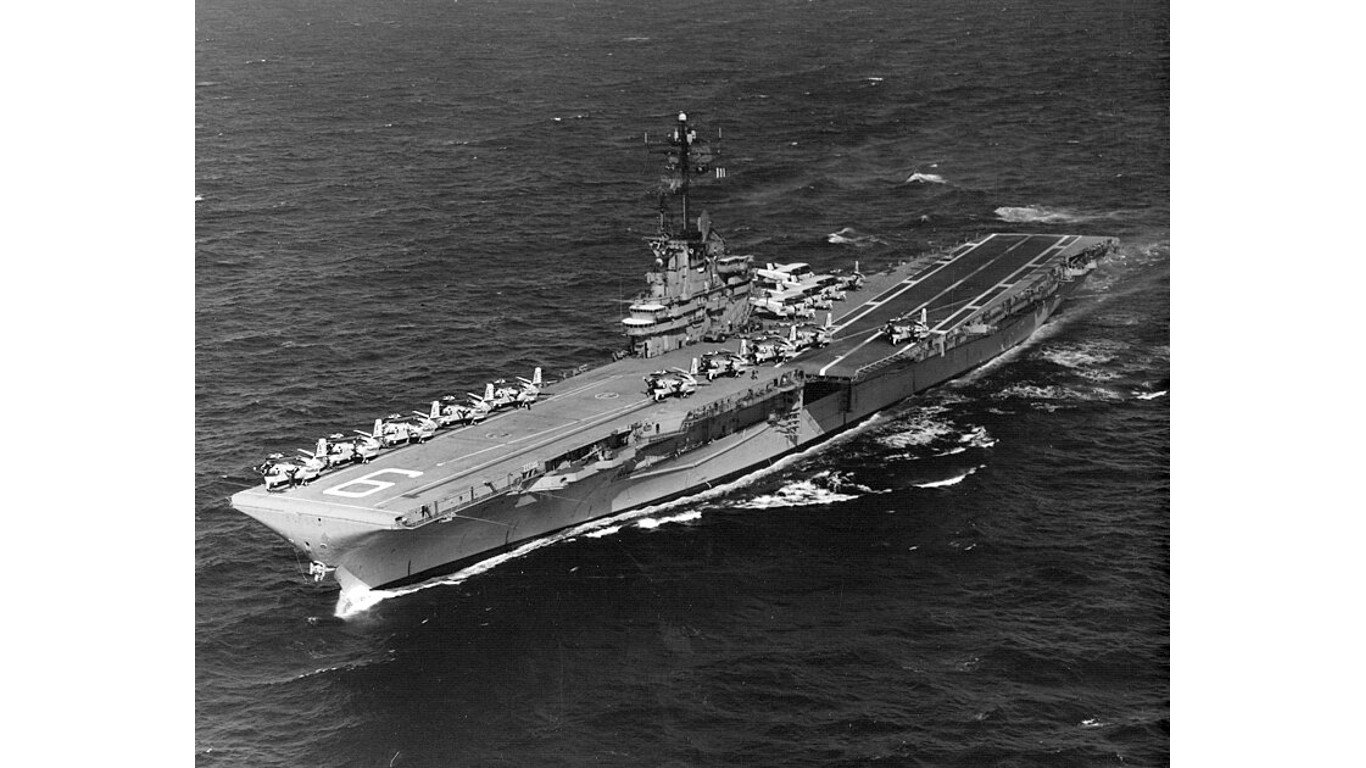
- Retirement: Discarded on June 1, 1975, by Navy sale
- Class: Essex
- Date built: December 31, 1942
USS Essex (CV-9) continued
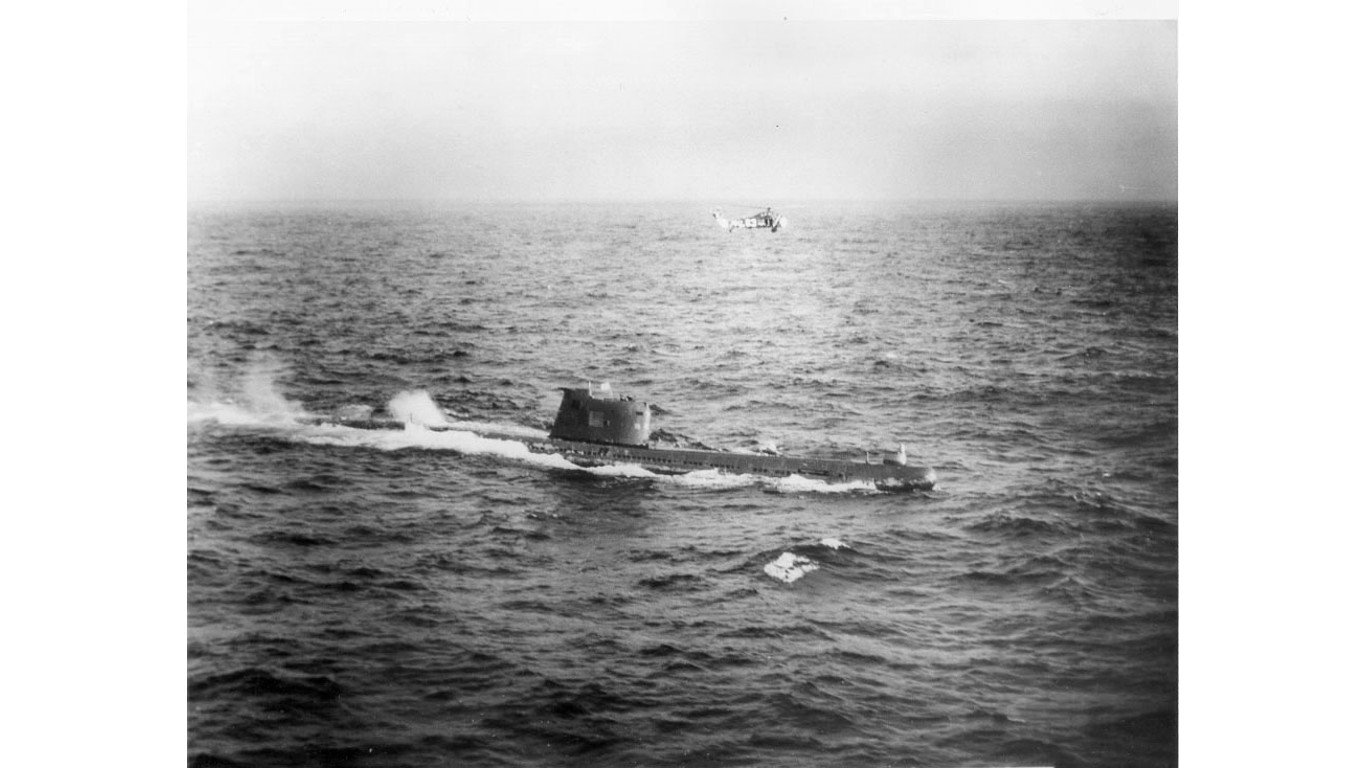
The leading Essex-class ship, the USS Essex was an active part of the following campaigns: Wake Island, Leyte Gulf, Okinawa, and Palau. After a process of post-war modernization, it was utilized as an attack carrier. It was later recommissioned as an anti-submarine aircraft carrier. Most of its career took place on the Atlantic, where it took on the Cuban Missile Crisis and the Korean War. It further acted as the main recovery carrier for the Apollo 7 mission. For its tremendous role in WWII, the Essex was awarded the Presidential Unit Citation, as well as 13 battle stars.
USS Franklin (CV-13)
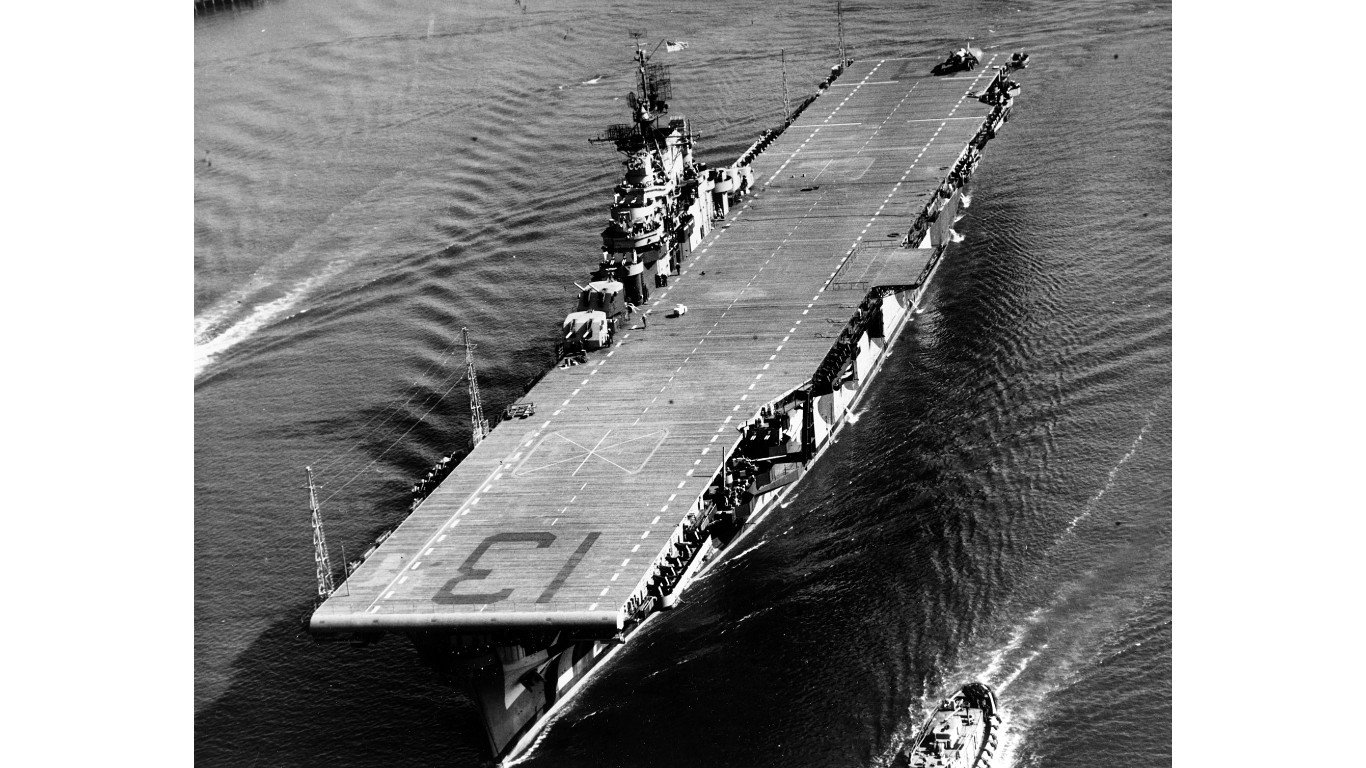
- Retirement: Discarded on August 1, 1966, by taking apart and scrapping
- Class: Essex
- Date built: January 31, 1944
USS Franklin (CV-13) continued
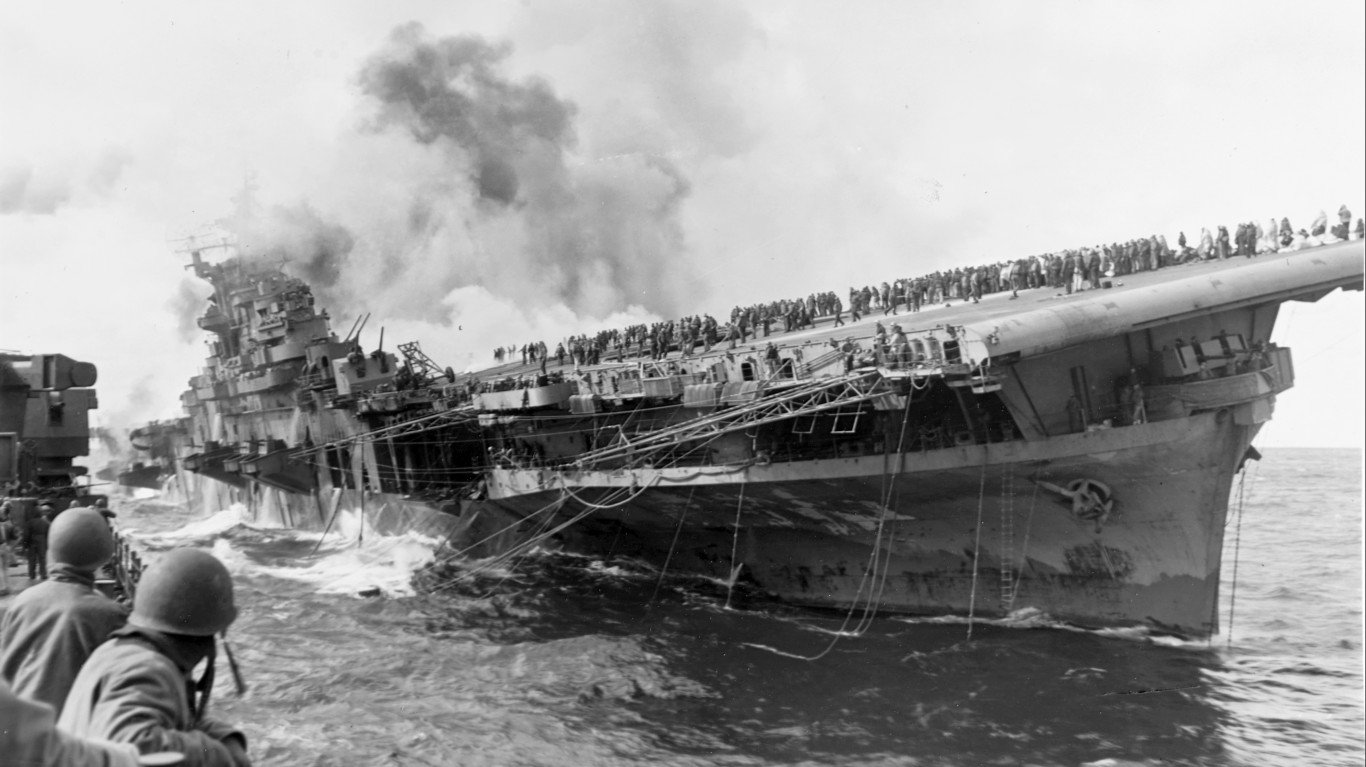
The USS Franklin aircraft carrier performed many impressive roles during WWII. This remarkable ship conducted strikes in the Mariana Islands, battled at Cape Engano, fought on the Sibuyan Sea, and aided amphibious landings at Peleliu and Leyte. It returned to the Pacific after being targeted by kamikazes in 1944. During the Okinawa landings, the flight deck was bombed by the Japanese, killing 807 American men. Two troops on board, Lt. Cmdr. Joseph T. O’Callahan and Lt. Donald A. Gary, earned the prestigious Medal of Honor for their courage during the attack. The USS Franklin was ultimately sold for scraps.
USS Hancock (CV-19)
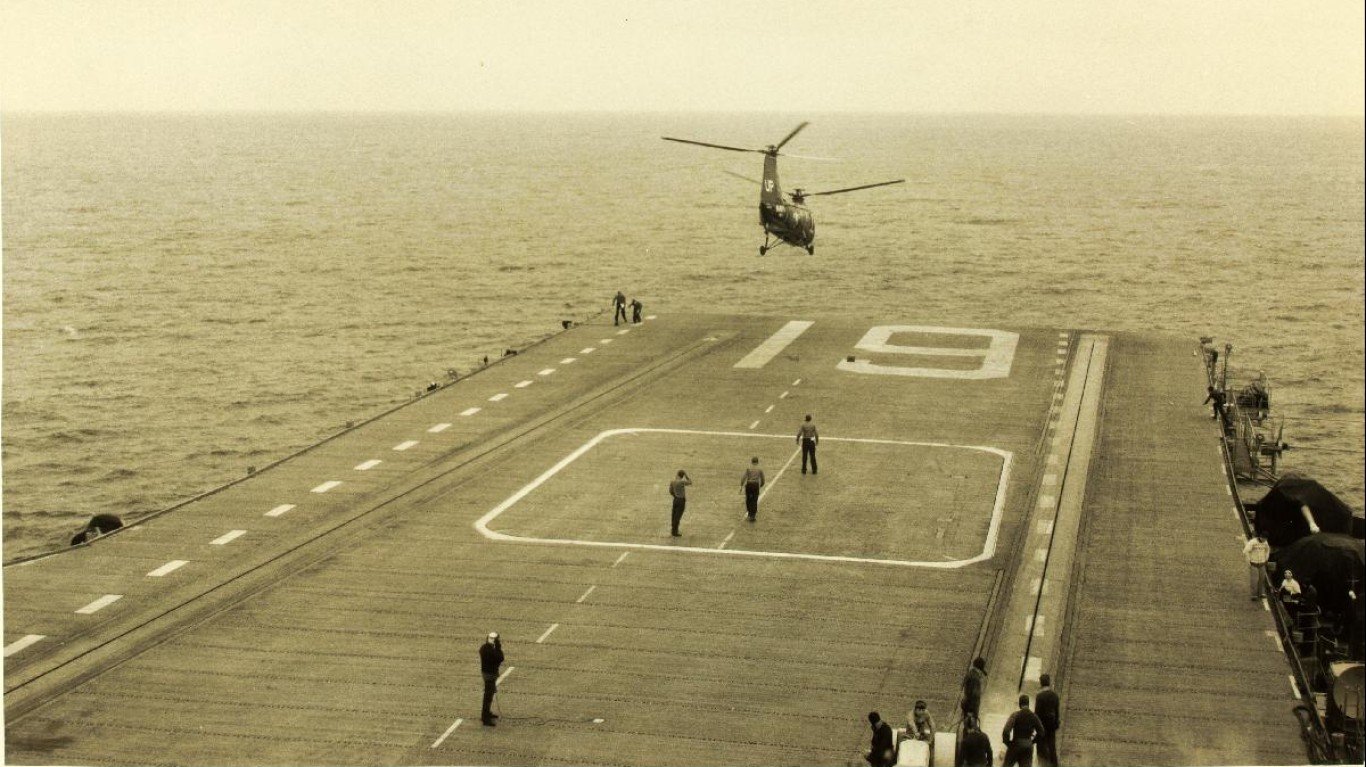
- Retirement: Discarded on September 1, 1976, by Navy sale
- Class: Essex
- Date built: April 15, 1944
USS Hancock (CV-19) continued
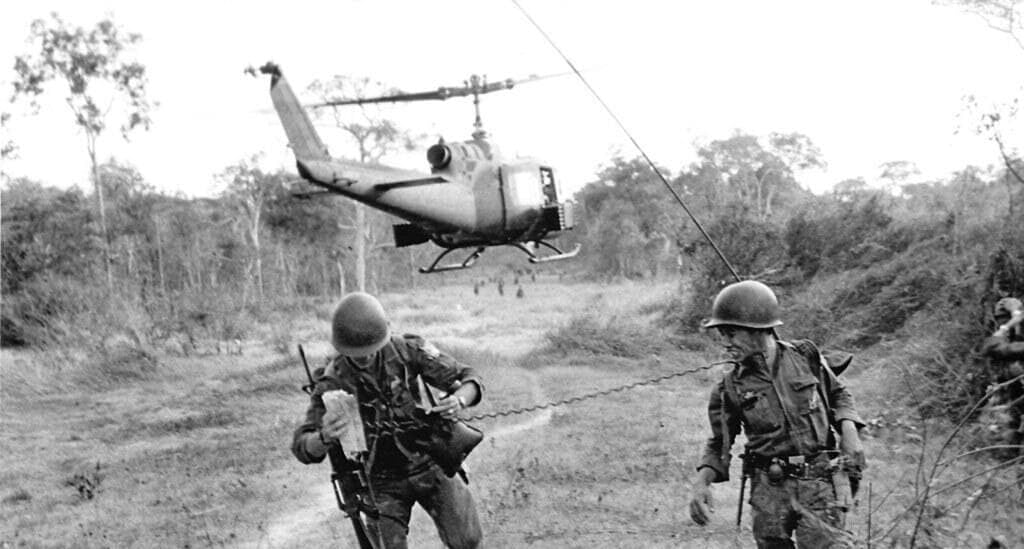
The USS Hancock was a member of Adm. W. F. Halsey’s 3rd Fleet, after it was constructed in 1944. The aircraft it carried targeted adversaries in the Philippines. The ship later continued its military career in the Korean War and the Vietnam War. It collected four battle stars before retirement and scrapping in 1976.
USS Hornet (CV-12)
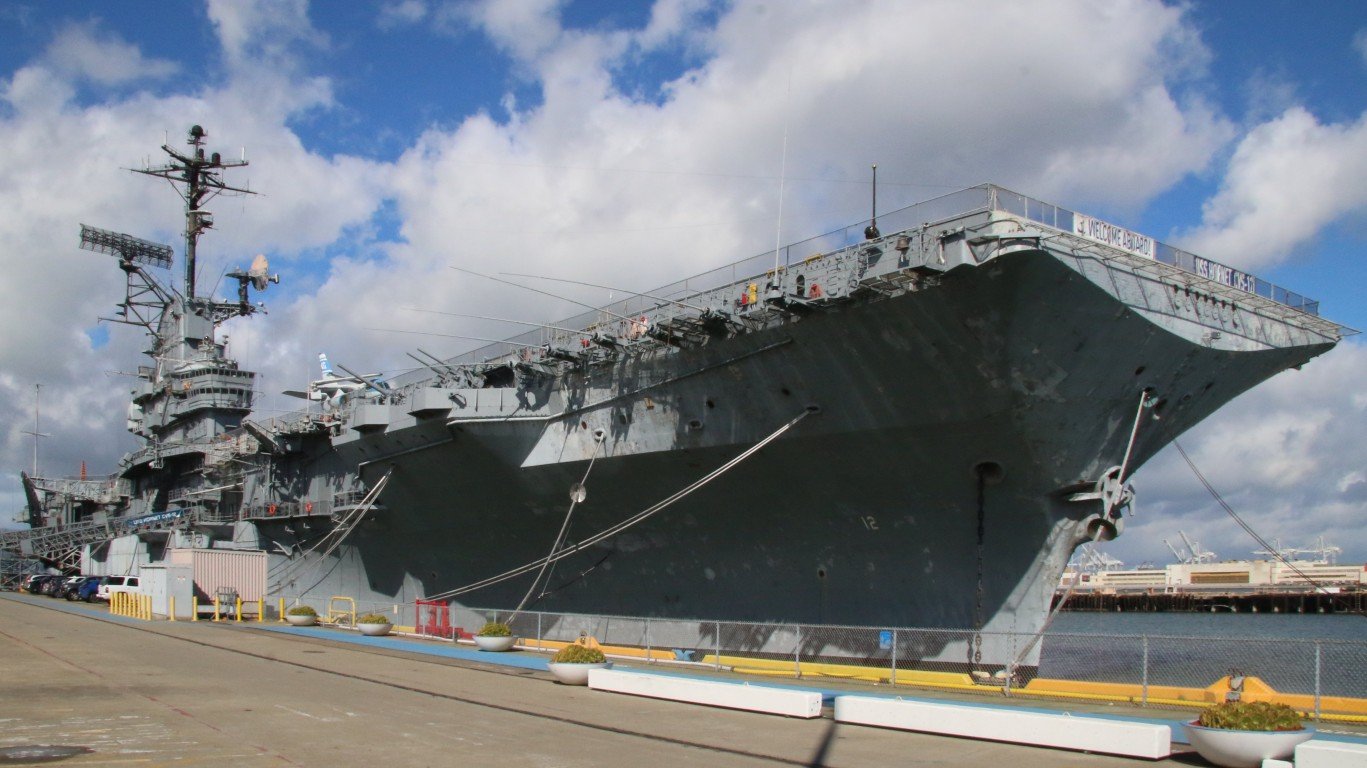
- Retirement: Donated to a museum on May 26, 1998
- Class: Essex
- Date built: November 29, 1943
USS Hornet (CV-12) continued
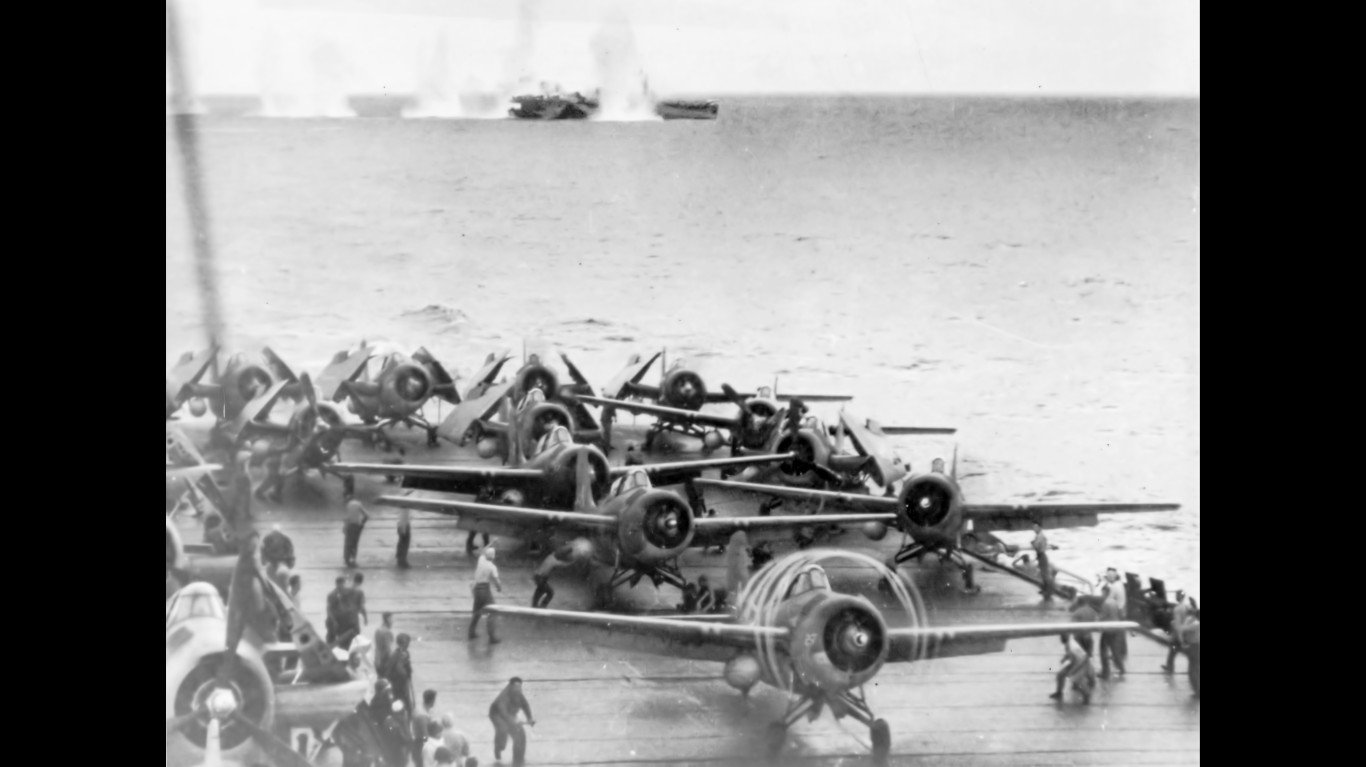
The USS Hornet was a major player in the Battle of the Philippine Sea, during which its craft decimated enemy planes. It was a member of the Fast Carrier Task Force 20, taking aim in the Philippines and assisting American troops on the ground. Though decommissioned in 1970, it soon transitioned to a museum located in Alameda, CA.
USS Hornet (CV-8)
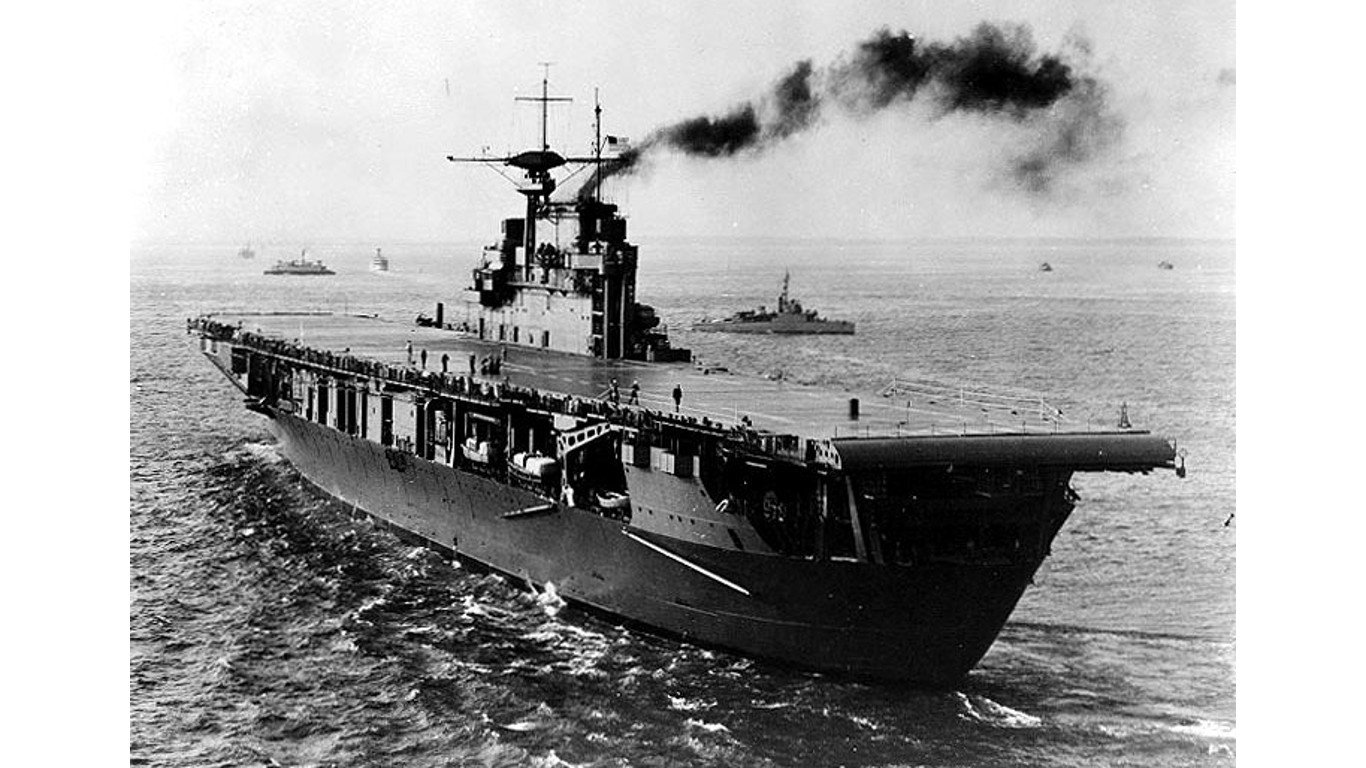
- Retirement: Sunk by Japanese destroyers on October 27, 1942
- Class: Yorktown
- Date built: October 20, 1941
USS Hornet (CV-8) continued
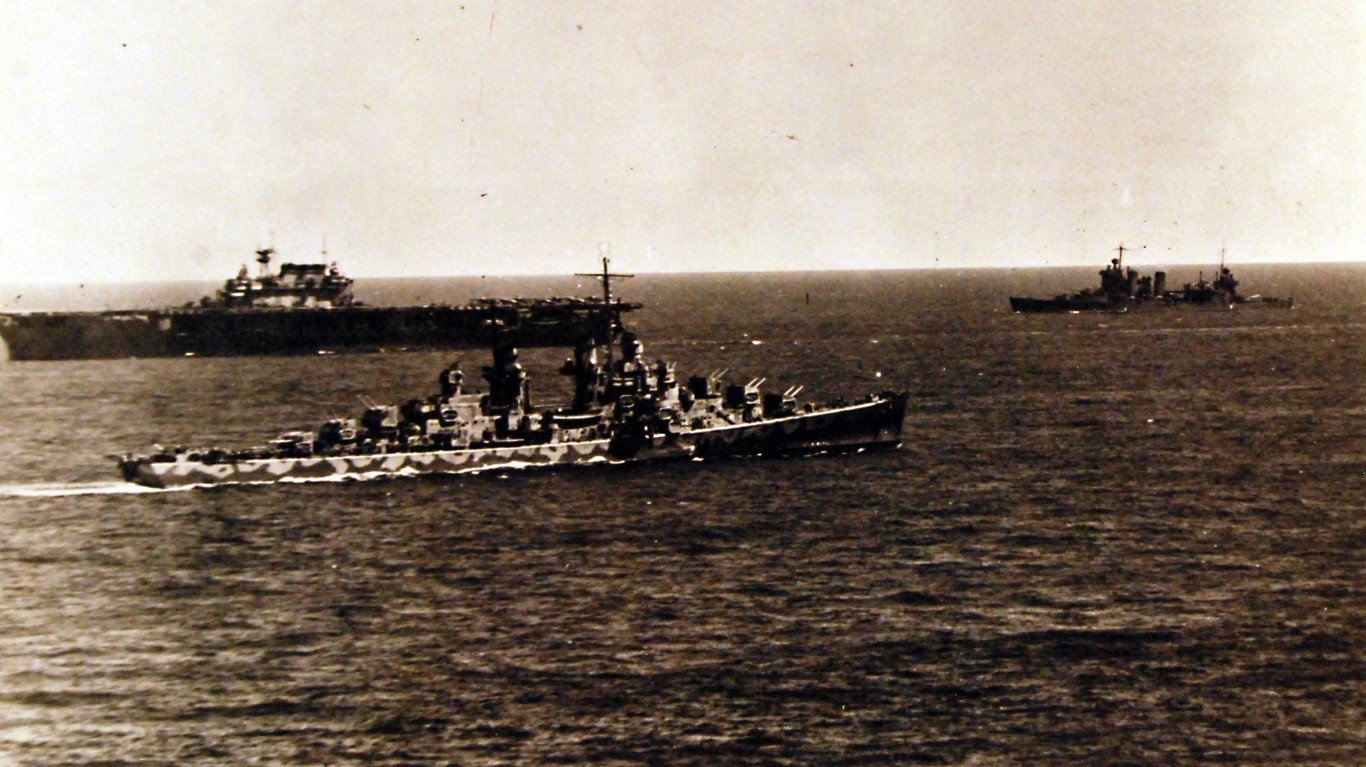
The USS Hornet (CV-8), which preceded the second ship of the same name, was an integral component in WWII. It was an active part of several significant conflicts, including the Doolittle Raids, the Battle of Midway, and the Battle of the Coral Sea. Its craft helped sink Mikuma, a Japanese cruiser. Though it survived damage incurred during the Battle of Santa Cruz, it met its end at the hands of Japanese submarines. It was later found near the Solomon Islands in 2019.
USS Intrepid (CV-11)
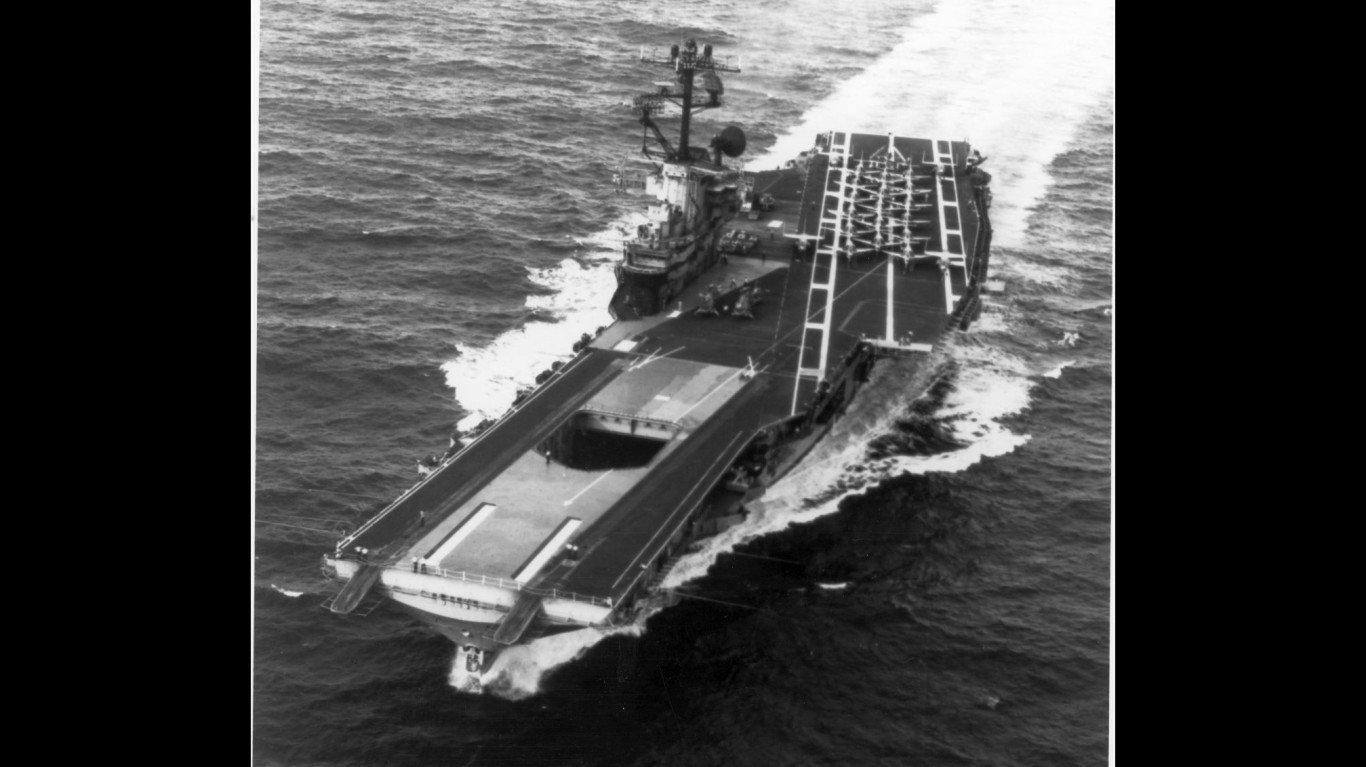
- Retirement: Donated to a museum as a memorial on April 27, 1981
- Class: Essex
- Date built: August 16, 1943
USS Intrepid (CV-11) continued
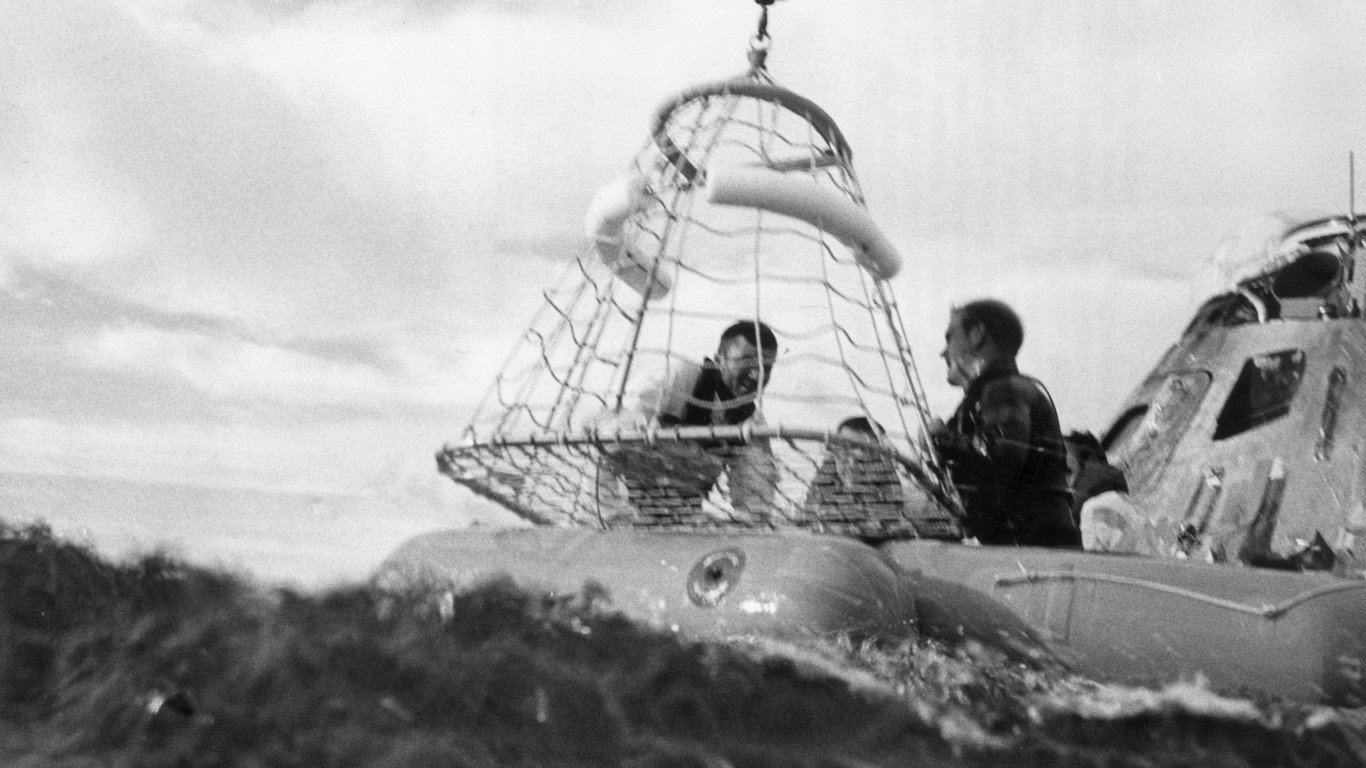
The USS Intrepid was built in 1943. It participated in the invasion of the Marshall Islands, raided the Japanese, and helped sink the Musashi battleship. Additionally, it backed the attack on Okinawa, enduring, despite several kamikaze attacks. After post-war renovation, the Intrepid helped recover astronauts from Mercury and Gemini. It eventually became an NYC museum.
USS Lexington (CV-2)
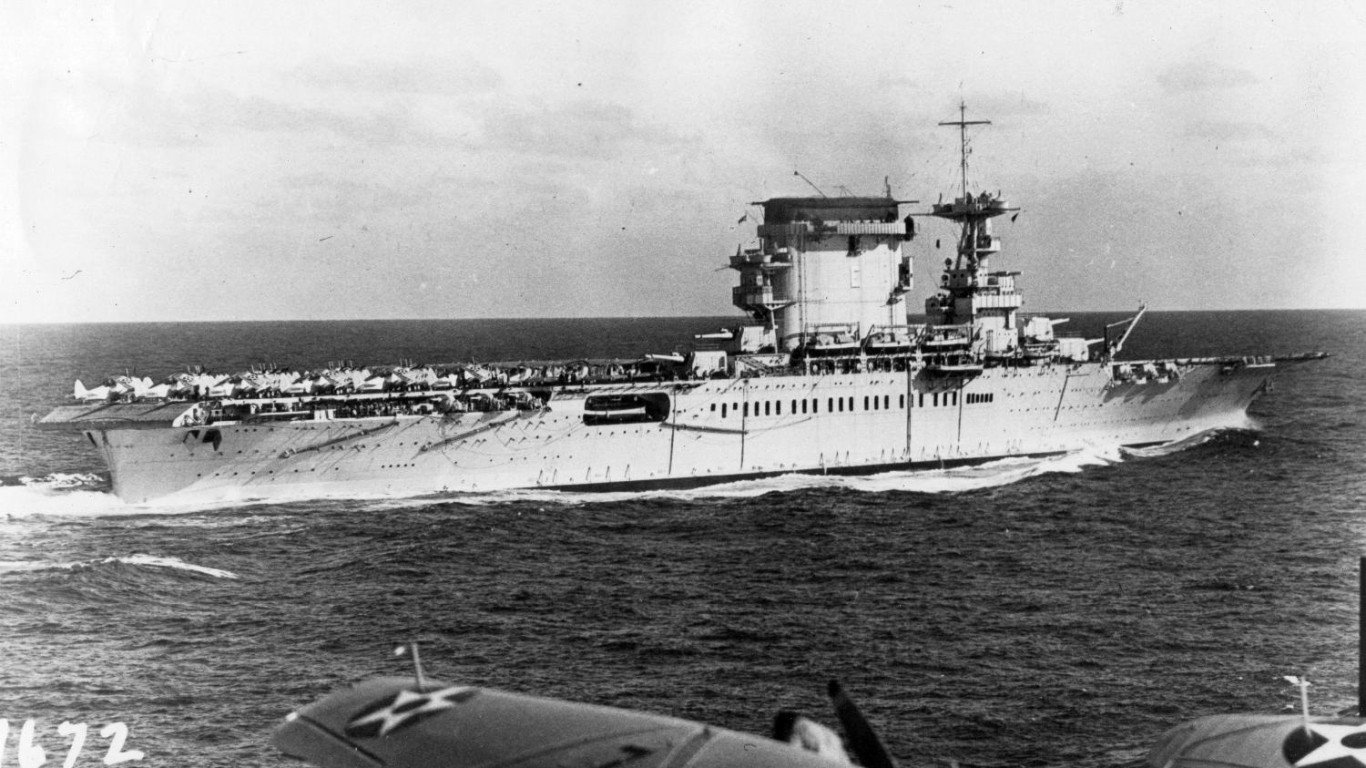
- Retirement: Scuttled by the American Navy on May 8, 1942
- Class: Lexington
- Date built: December 14, 1927
USS Lexington (CV-2) continued
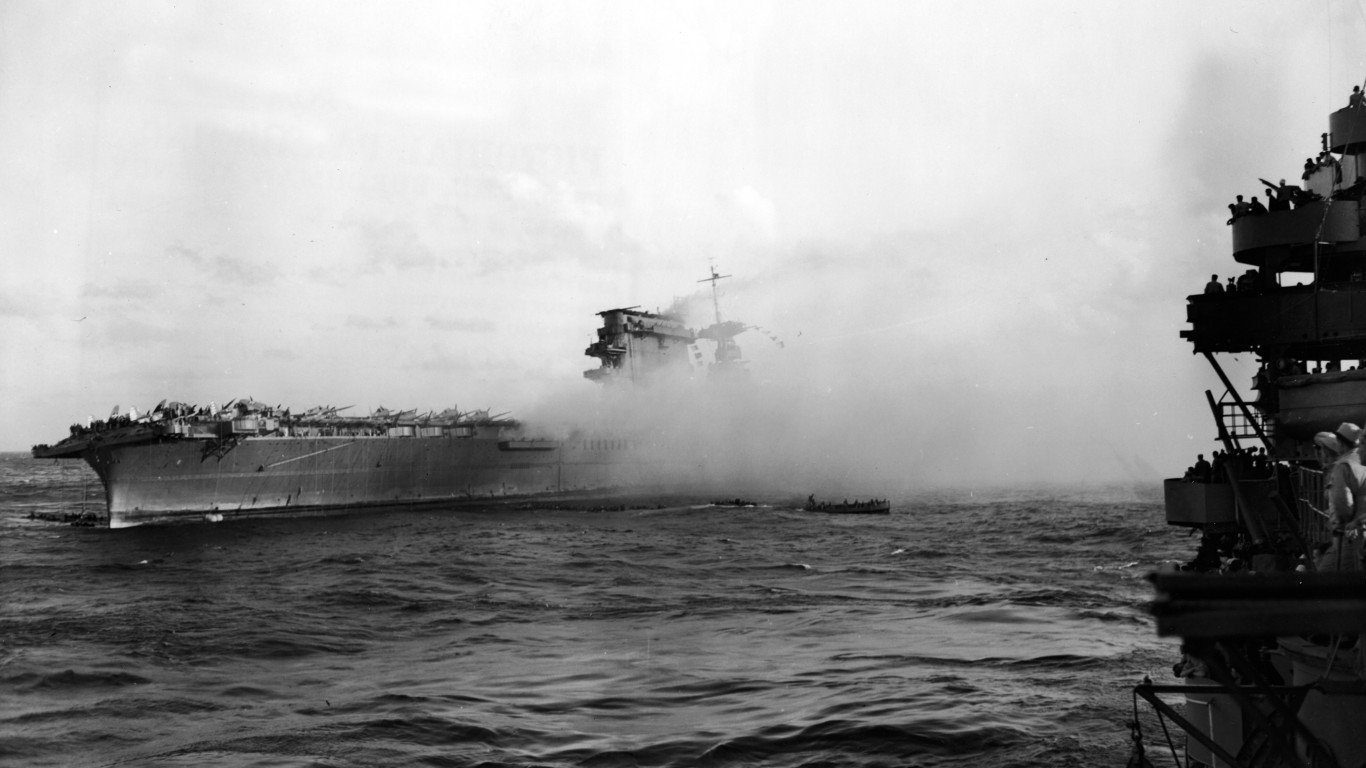
Built in 1927, the USS Lexington predated WWII by several years. This particular carrier brought necessary aircraft to Midway Island, before diverting enemy troops in the Marshall Islands. It was also a key player in the Battle of the Coral Sea. Interestingly, the Lexington was the first American aircraft carrier lost to the war, after it was struck multiple times and scuttled.
USS Lexington (CV-16)
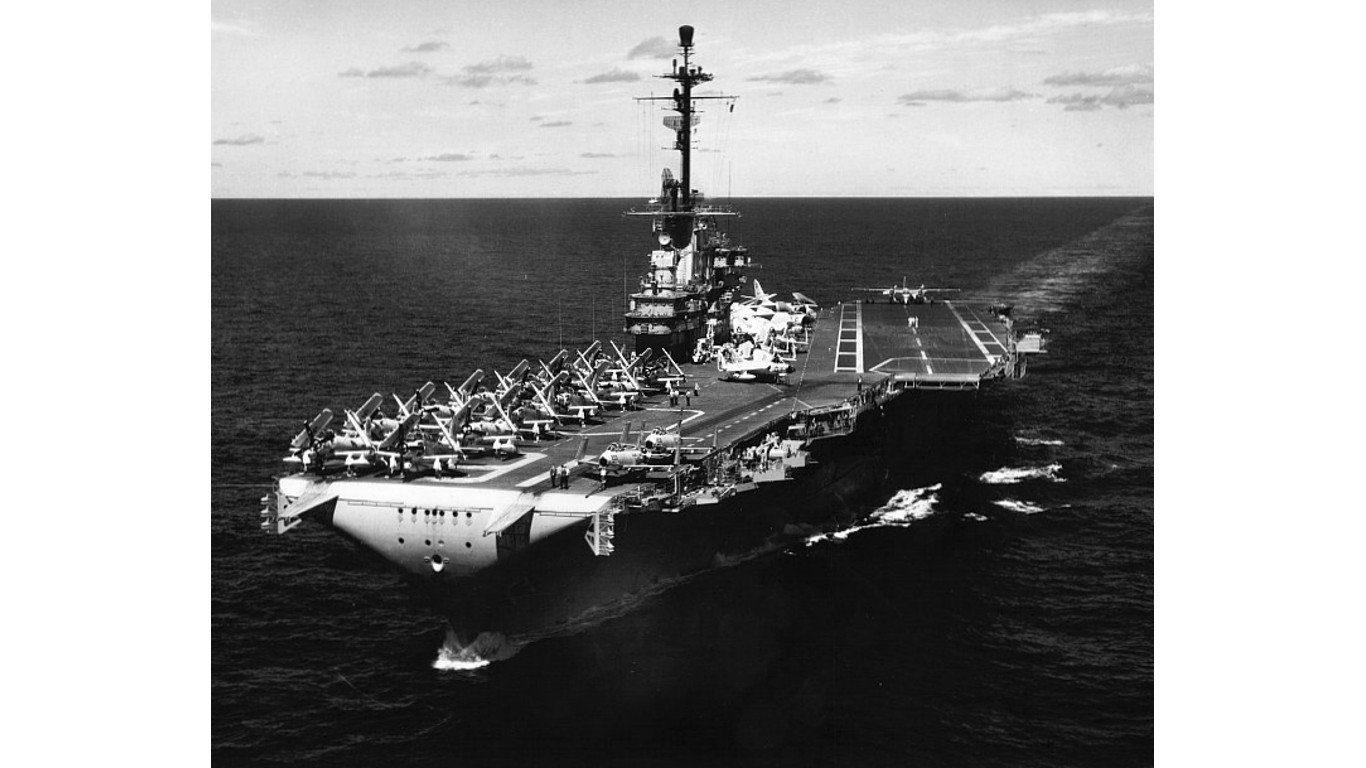
- Retirement: Donated to a museum as a memorial on June 15, 1992
- Class: Essex
- Date built: February 17, 1943
USS Lexington (CV-16) continued
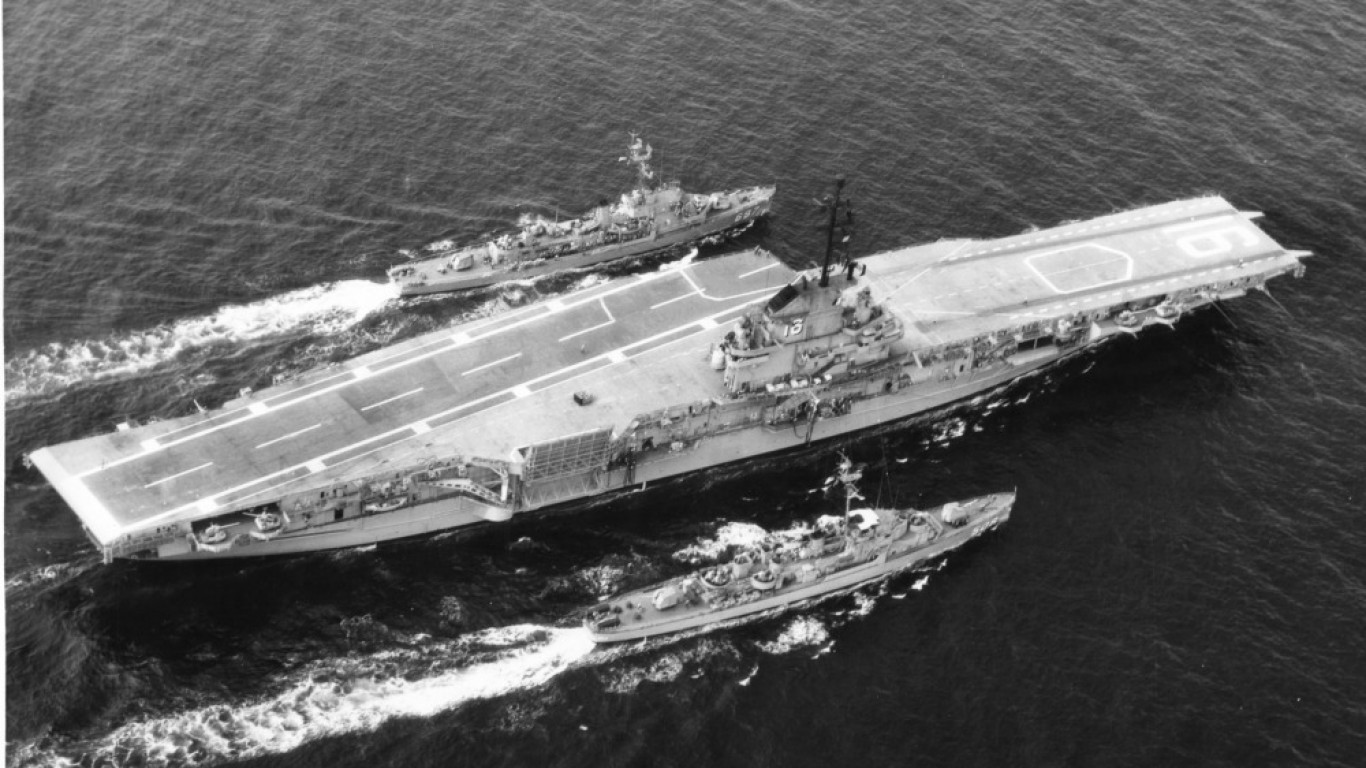
Named in honor of its scuttled predecessor, the second Lexington played an essential role in the Pacific war front. It fought in the Battle of the Philippine Sea, a conflict most notable for the destruction of the Japanese Navy. Though utilized in different ways after WWII, it ultimately became the USS Lexington Museum on the Bay in Corpus Christi, TX. Incredibly, it remains the oldest existing fleet carrier in the world.
USS Randolph (CV-15)
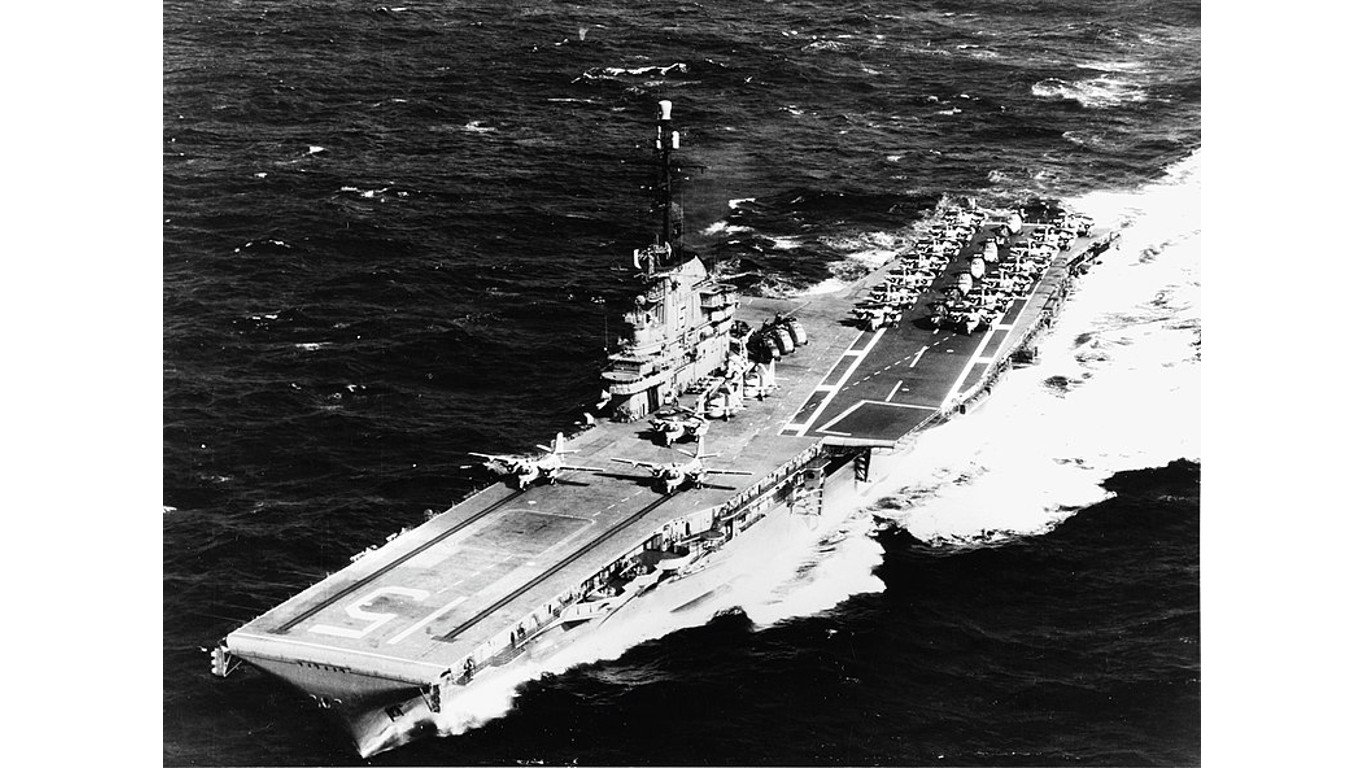
- Retirement: Discarded on April 1, 1975, by Navy sale
- Class: Essex
- Date built: October 9, 1944
USS Randolph (CV-15) continued
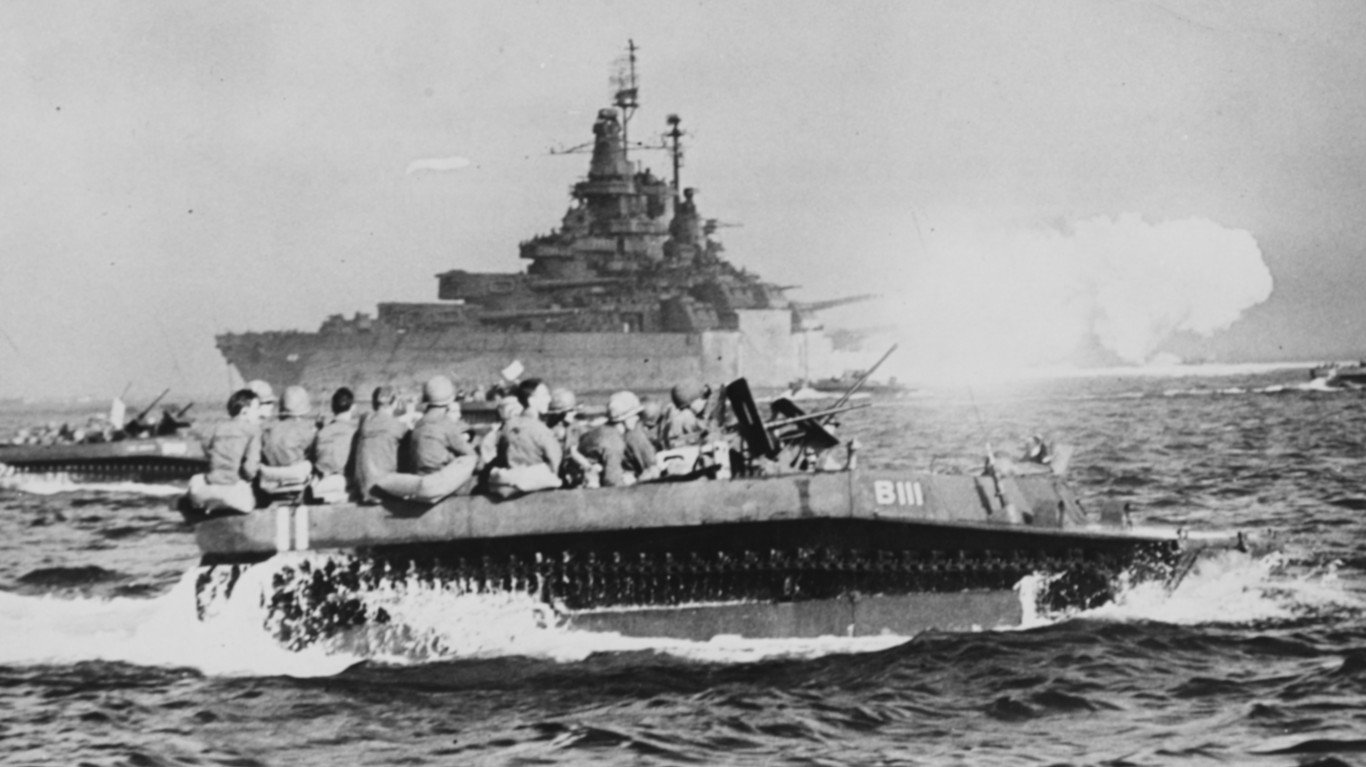
The USS Randolph hit the Pacific Ocean in 1945, engaging in airstrikes against enemy lines in the Bonins. As part of the Iwo Jima invasions, the ship was damaged by kamikaze. After repairs, Randolph returned to the Pacific just in time for the Okinawa campaign. It continued to fight Japanese targets through the end of the war. Post war, Randolph continued its career as part of the Atlantic fleet, undergoing many renovations. In 1969, it was decommissioned. It was later scrapped in 1975.
USS Ranger (CV-4)
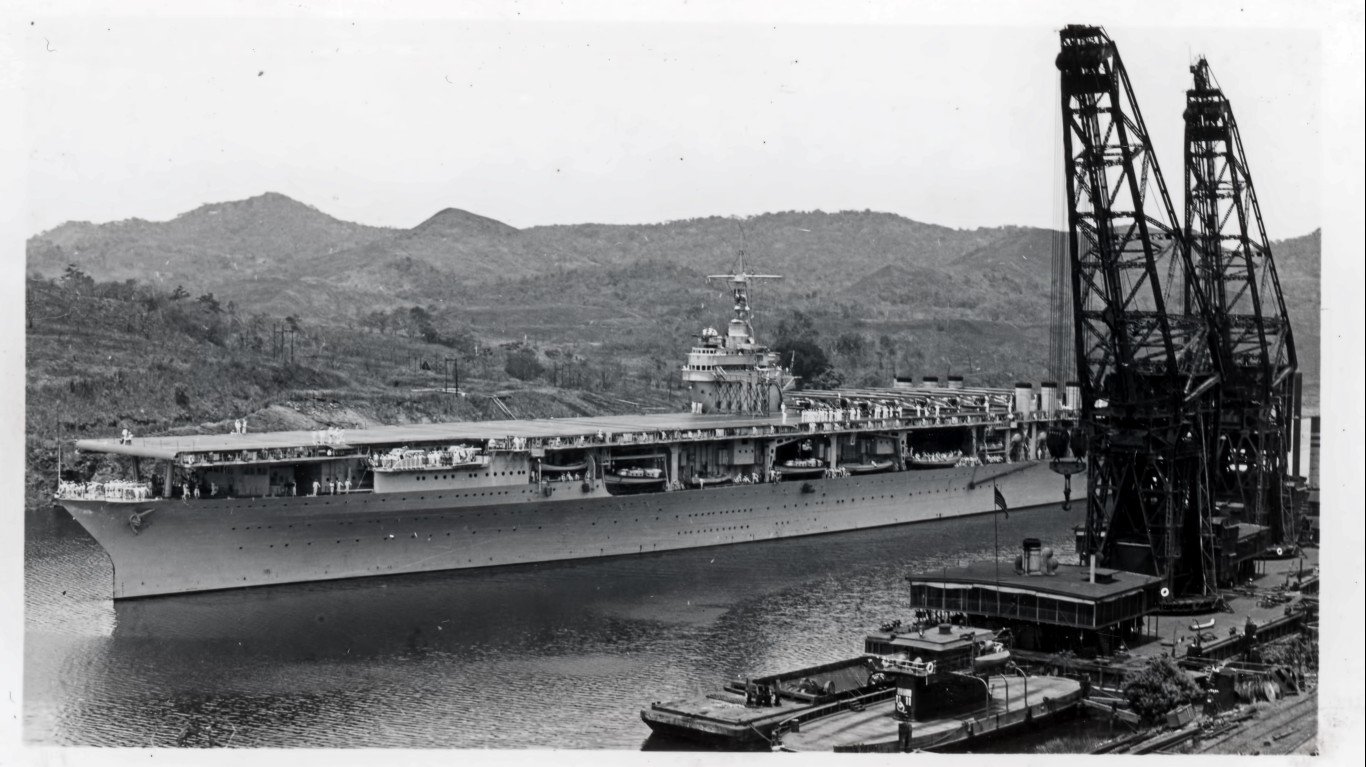
- Retirement: Discarded on January 28, 1947, by dismantling
- Class: Ranger
- Date built: June 4, 1934
USS Ranger (CV-4) continued
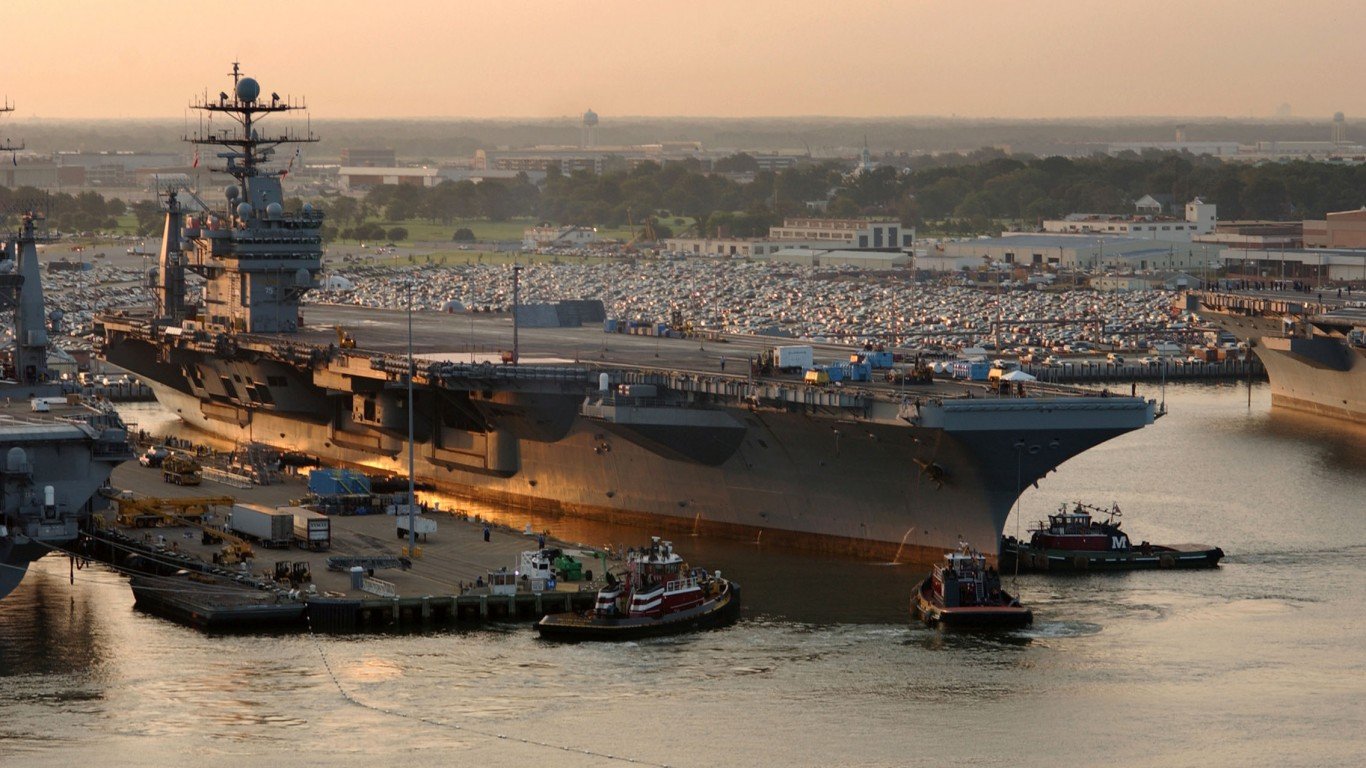
The first carrier to be built from scratch, as opposed to being repurposed from an older hull, the USS Ranger was used for the purposes of escort, aircraft transport, and amphibious support. Though it was not as fast or as large as other carriers, it was one of only three pre-war carriers to survive WWII. This ship went through a post-war renovation at Norfolk Navy Yard. It was sold for scraps in 1947, after being decommissioned in 1946.
USS Saratoga (CV-3)
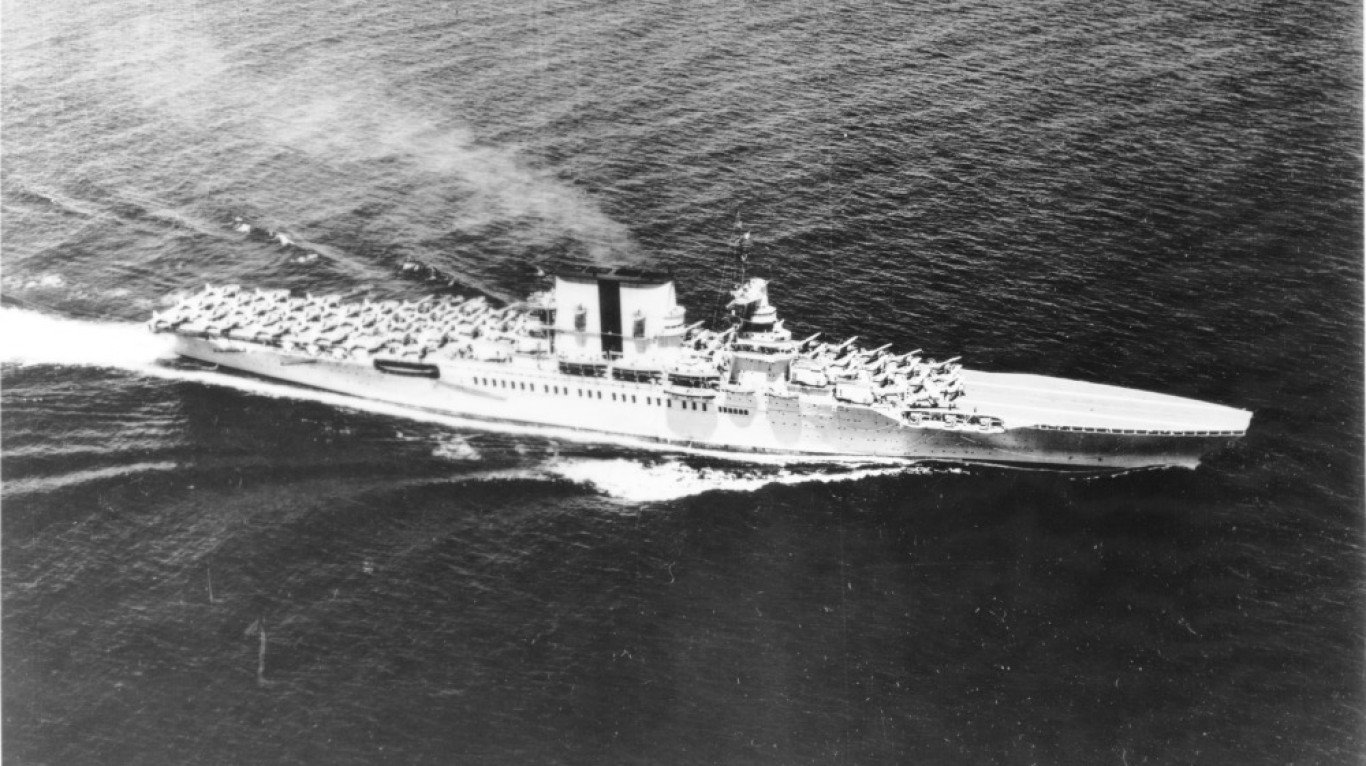
- Retirement: Decimated by atomic bomb during test on July 25, 1946
- Class: Lexington
- Date built: November 16, 1927
USS Saratoga (CV-3) continued
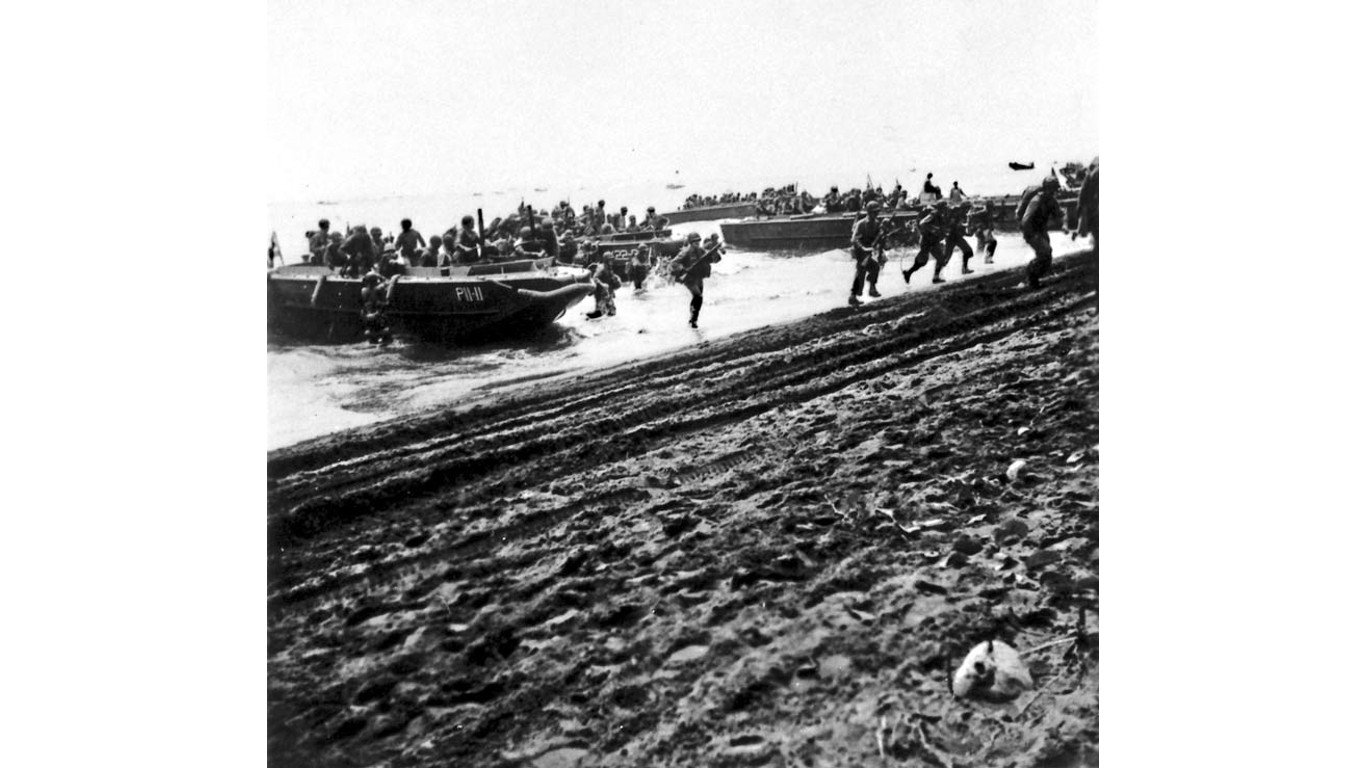
Commissioned as early as 1927, the USS Saratoga was a battlecruiser-turned-aircraft carrier. It acted as the Navy’s original fast carrier, operating during the Guadalcanal campaign. This ship offered air cover for landings and sank the Ryujo, Japan’s aircraft carrier. Ever resilient, the Saratoga was able to function through the end of the war, despite numerous torpedo strikes. However, it was later decimated at Bikini Atoll during atomic bomb testing.
USS Shangri-La (CV-38)
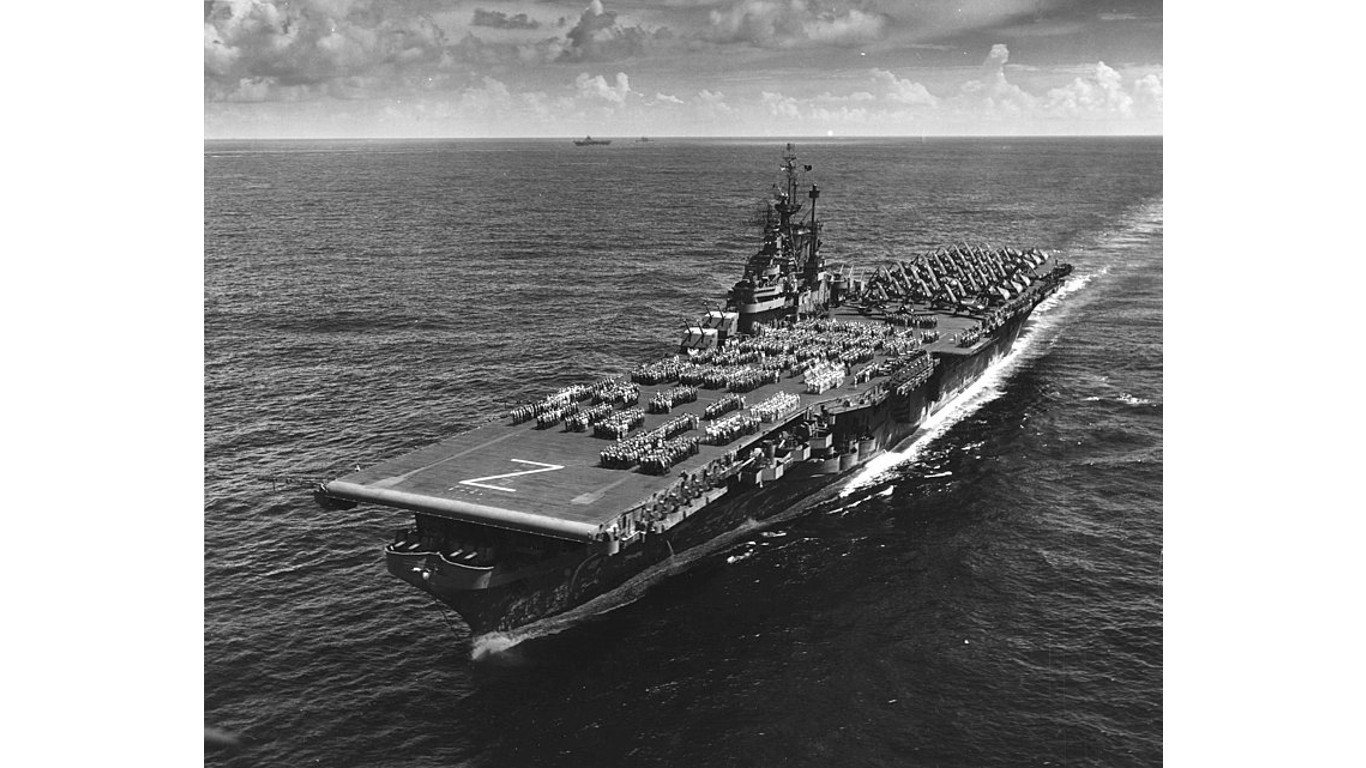
- Retirement: Discarded on August 9, 1988, by MARAD exchange
- Class: Essex
- Date built: September 15, 1944
USS Shangri-La (CV-38) continued

This Essex-class carrier named the USS Shangri-La was built in September of 1944 to commandeer Task Forces 38 and 58. It participated in strikes on Okinawa and other Japanese areas of interest. The Shangri-La was decommissioned in 1947, recommissioned in 1951, and modernized to serve in Vietnam. Though it was decommissioned once again in 1971, it wasn’t scrapped until 1988.
USS Ticonderoga (CV-14)
- Retirement: Discarded on September 1, 1975, by Navy sale
- Class: Essex
- Date built: May 8, 1944
USS Ticonderoga (CV-14) continued
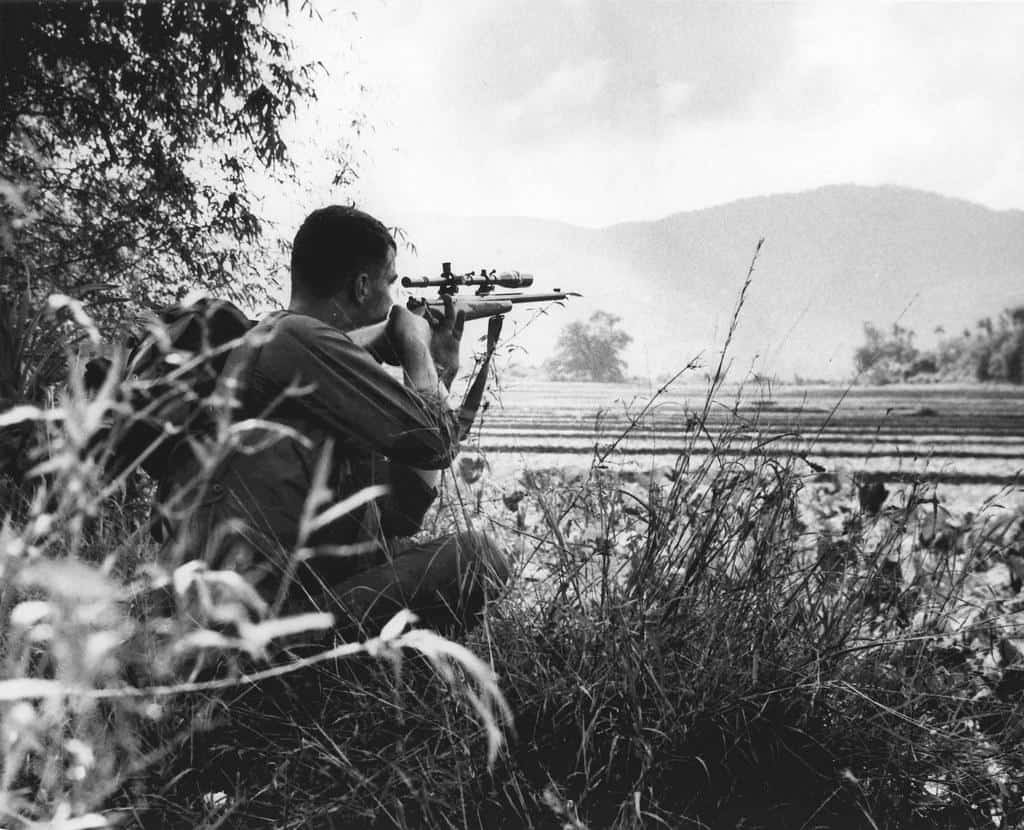
Built in May of 1944, the Essex-class Ticonderoga earned five battle stars in WWII. Later, in the 1950s, it transitioned to both an attack carrier and an anti-submarine carrier. Following its part in the Vietnam War, it was decommissioned in 1973. Two years later, it was sold for scraps in 1975.
USS Wasp (CV-7)
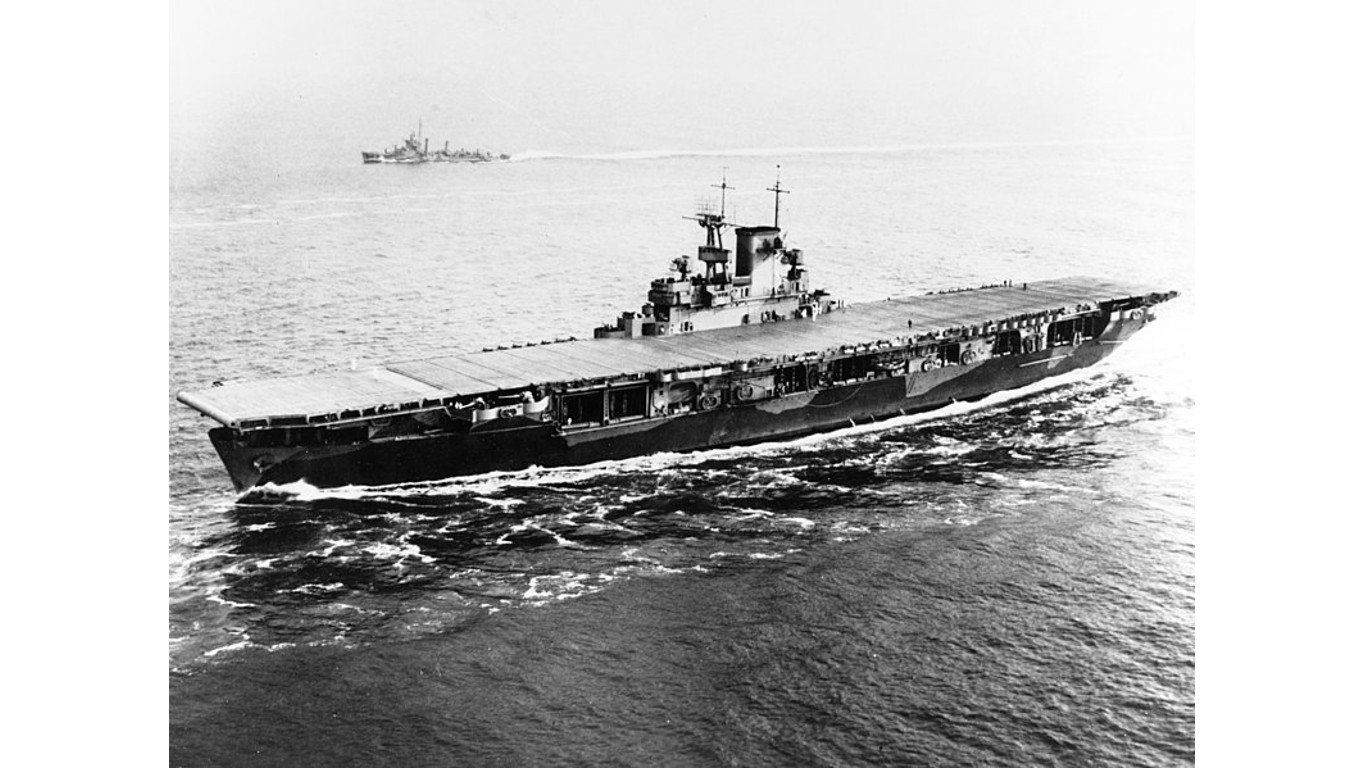
- Retirement: Sunk on September 15, 1942, by Japanese submarine
- Class: Wasp
- Date built: April 25, 1940
USS Wasp (CV-7) continued
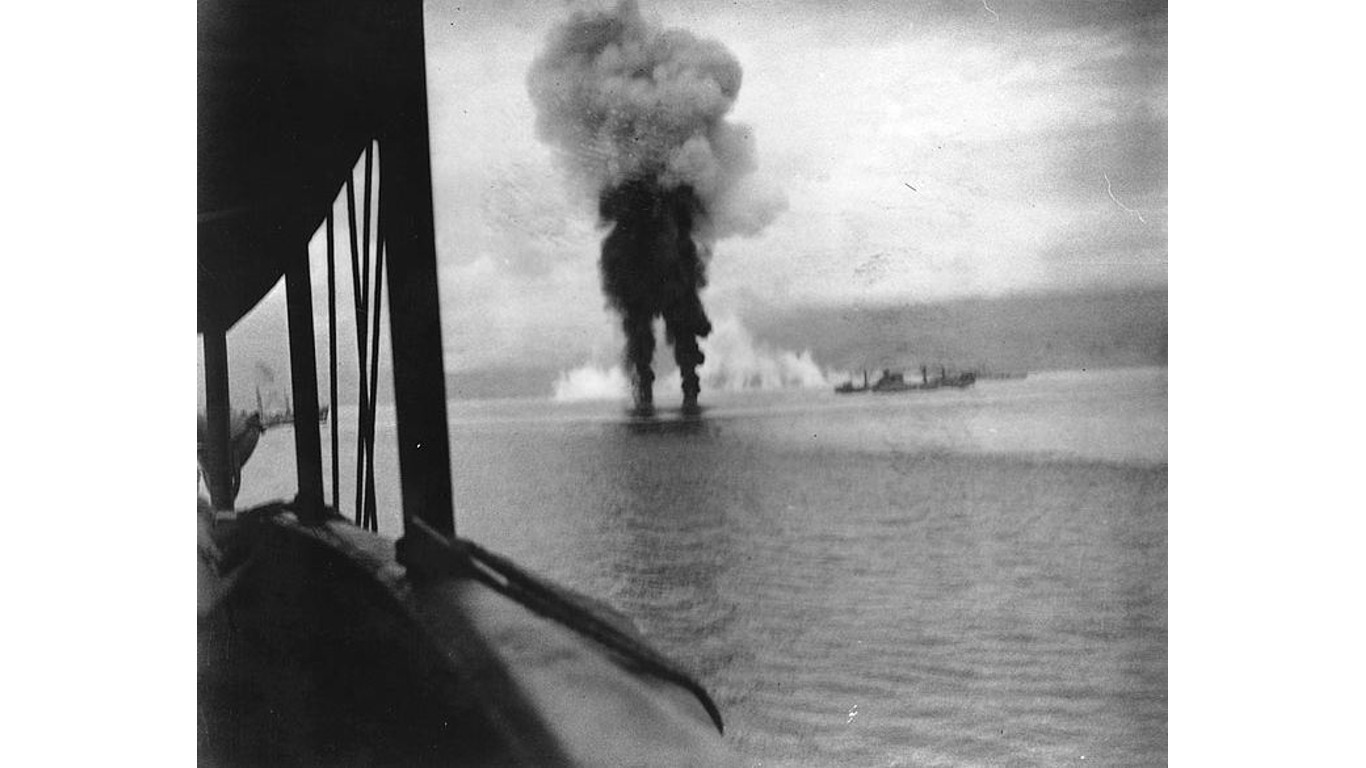
The short-lived USS Wasp was a smaller model of the Yorktown-class carriers. Commissioned in 1940, it was tragically lost at sea in 1942. Though starting in the Atlantic campaign, it was later moved to the Pacific and fought in the Guadalcanal invasion. Unfortunately, this infamous ship was destroyed by three torpedoes and abandoned in September of 1942.
USS Wasp (CV-18)
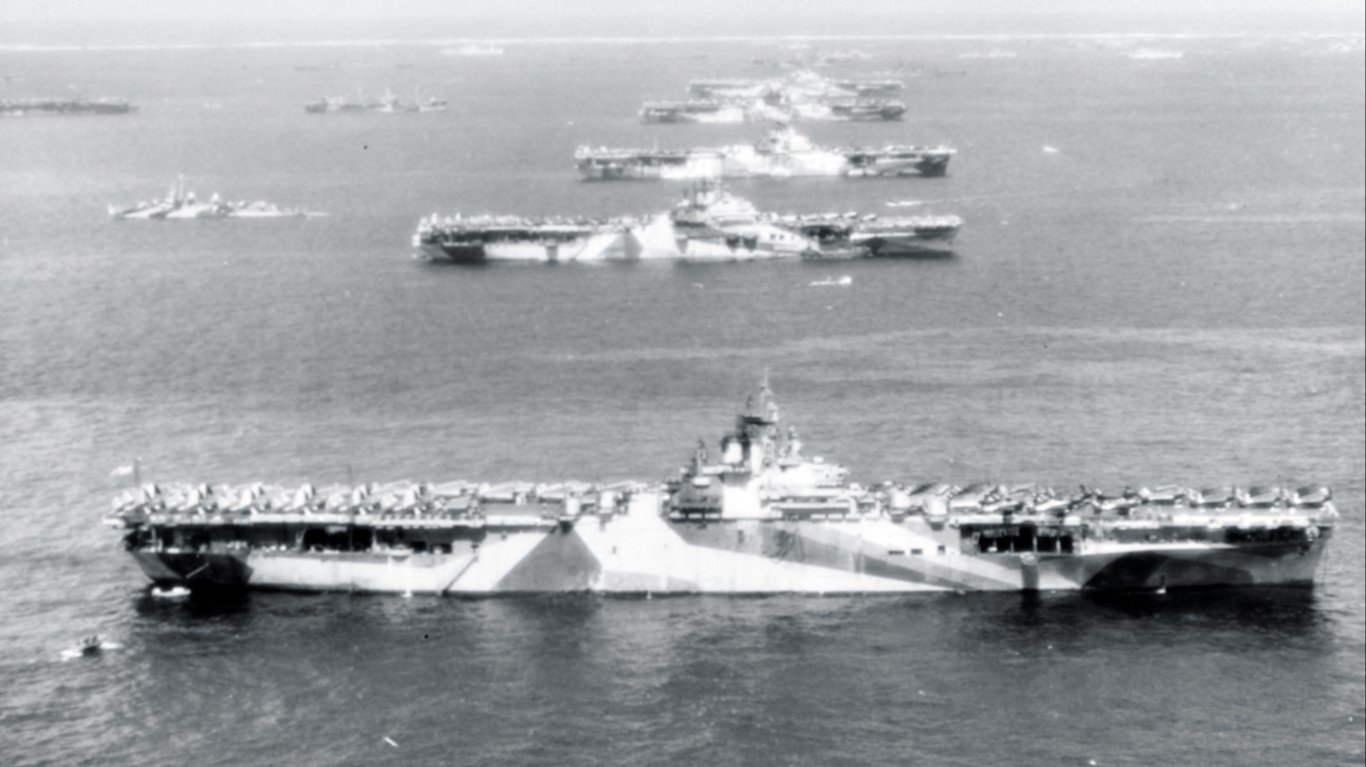
- Retirement: Discarded on May 21, 1973, by Navy sale
- Class: Essex
- Date built: November 24, 1943
USS Wasp (CV-18) continued

Built in November of 1943, the USS Wasp was first called Oriskany, but was renamed to honor the original Wasp (which sank in 1942). During its eventful time on the open ocean, it received 8 battle stars and crossed the Mediterranean, Caribbean, and Atlantic. After its initial decommission, it was recommissioned as an attack carrier and an anti-submarine carrier. Following successful retrieval of multiple Gemini-mission astronauts, the second Wasp retired in 1972. It was broken down for scraps a year later.
USS Yorktown (CV-5)

- Retirement: Sunk on June 7, 1942, by Japanese submarines
- Class: Yorktown
- Date built: September 30, 1937
USS Yorktown (CV-5) continued

The USS Yorktown offered reinforcement to the Pacific Fleet in the time period following Pearl Harbor. It was heavily damaged during the Battle of the Coral Sea, but still went on to fight in the Battle of Midway. Though it played a vital role in taking down Japanese carriers, the Yorktown paid the price when it was sunk by a Japanese submarine. Interestingly, the wreck was not discovered until 1998.
USS Yorktown (CV-10)

- Retirement: Donated to a museum memorial on August 15, 1974
- Class: Essex
- Date built: April 15, 1943
USS Yorktown (CV-10) continued
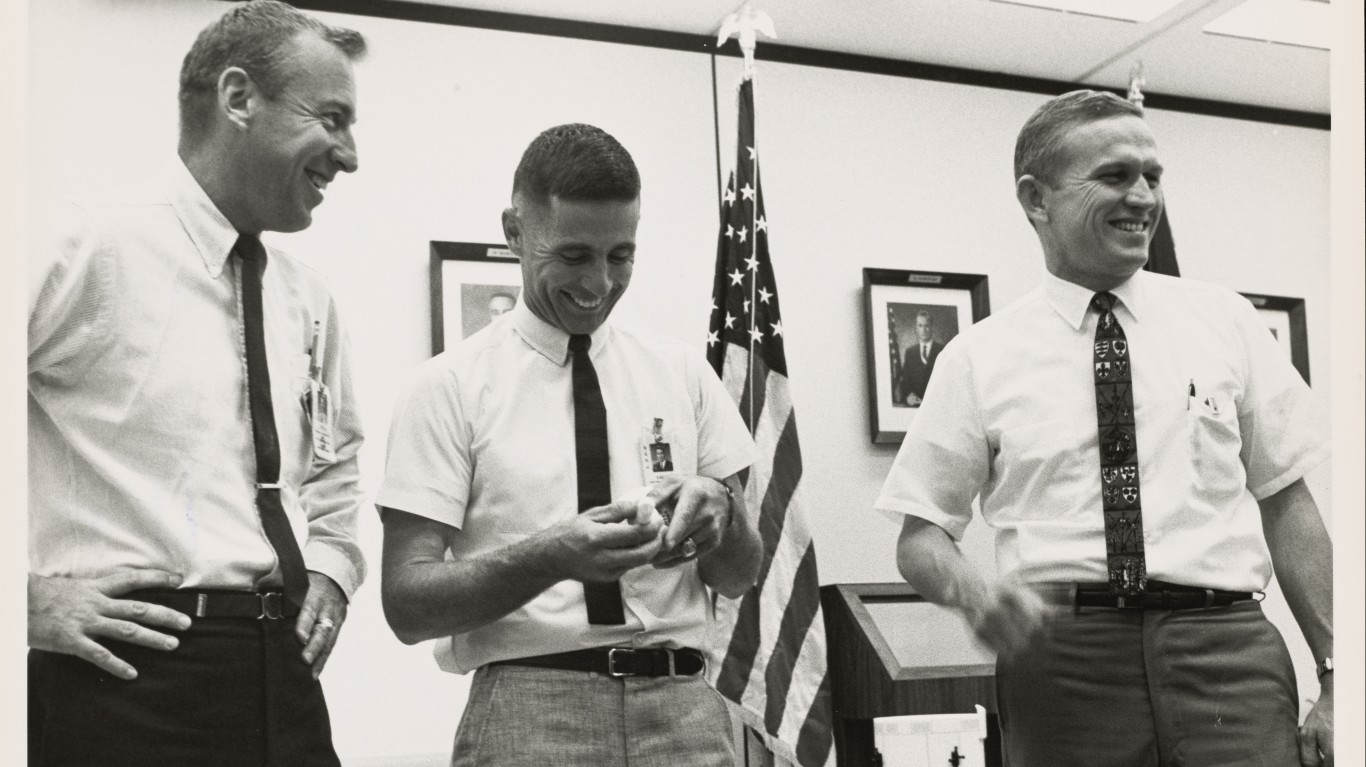
The USS Yorktown CV-10 was commissioned in April of 1943. It was originally named for the Bon Homme Richard, which tragically went down during the Battle of Midway. It earned the Presidential Unit Citation and 11 battle stars for its integral part in several Pacific battles. A mid-century renovation led to its new position as an attack and anti-submarine carrier. The mighty ship later served in Vietnam and recovered the crew of Apollo 8. Though decommissioned in 1970, it is not lost to time. The Yorktown stands as part of the Patriots Point Naval and Maritime Museum in Charleston, South Carolina.
ALERT: Take This Retirement Quiz Now (Sponsored)
Take the quiz below to get matched with a financial advisor today.
Each advisor has been vetted by SmartAsset and is held to a fiduciary standard to act in your best interests.
Here’s how it works:
1. Answer SmartAsset advisor match quiz
2. Review your pre-screened matches at your leisure. Check out the advisors’ profiles.
3. Speak with advisors at no cost to you. Have an introductory call on the phone or introduction in person and choose whom to work with in the future
Take the retirement quiz right here.
Thank you for reading! Have some feedback for us?
Contact the 24/7 Wall St. editorial team.